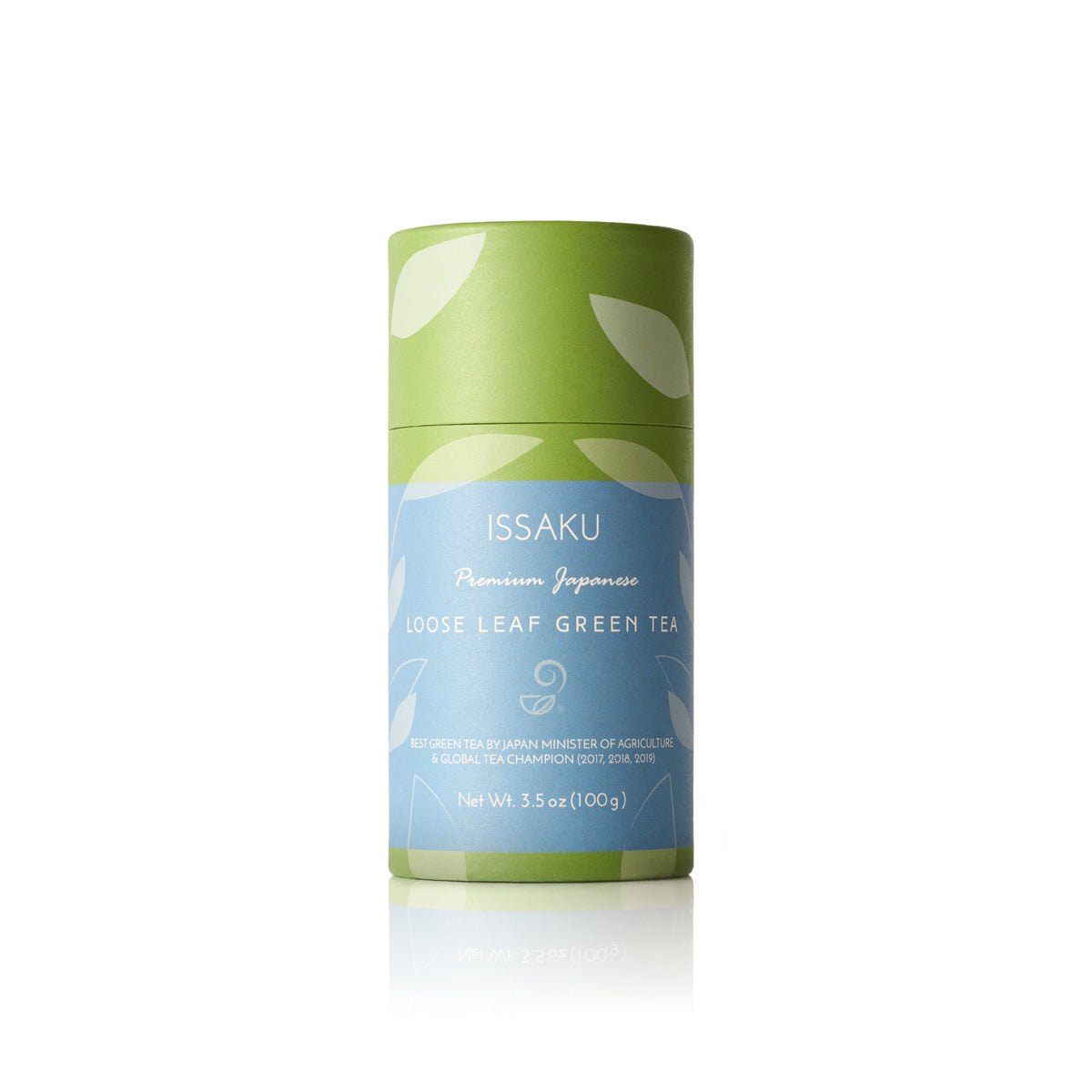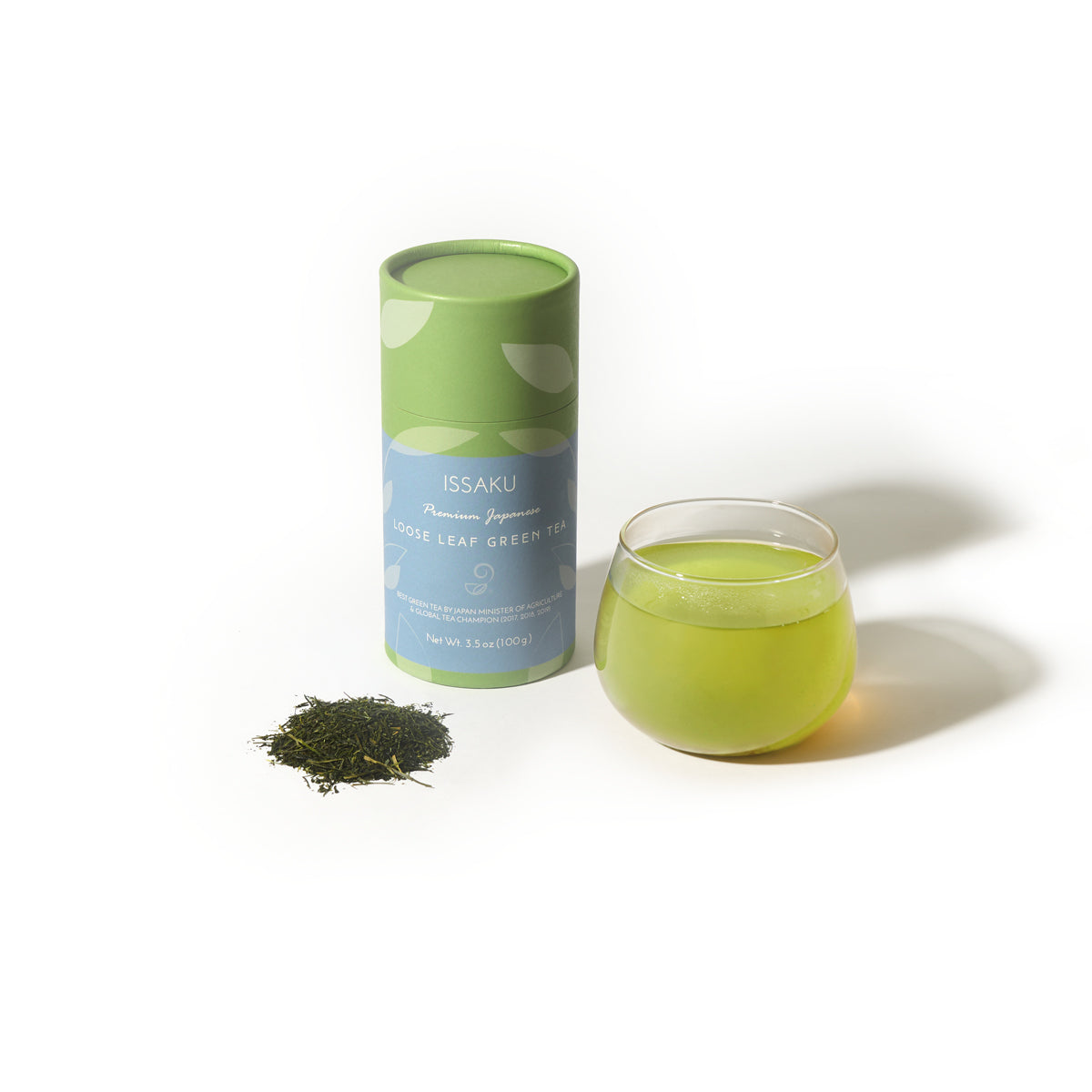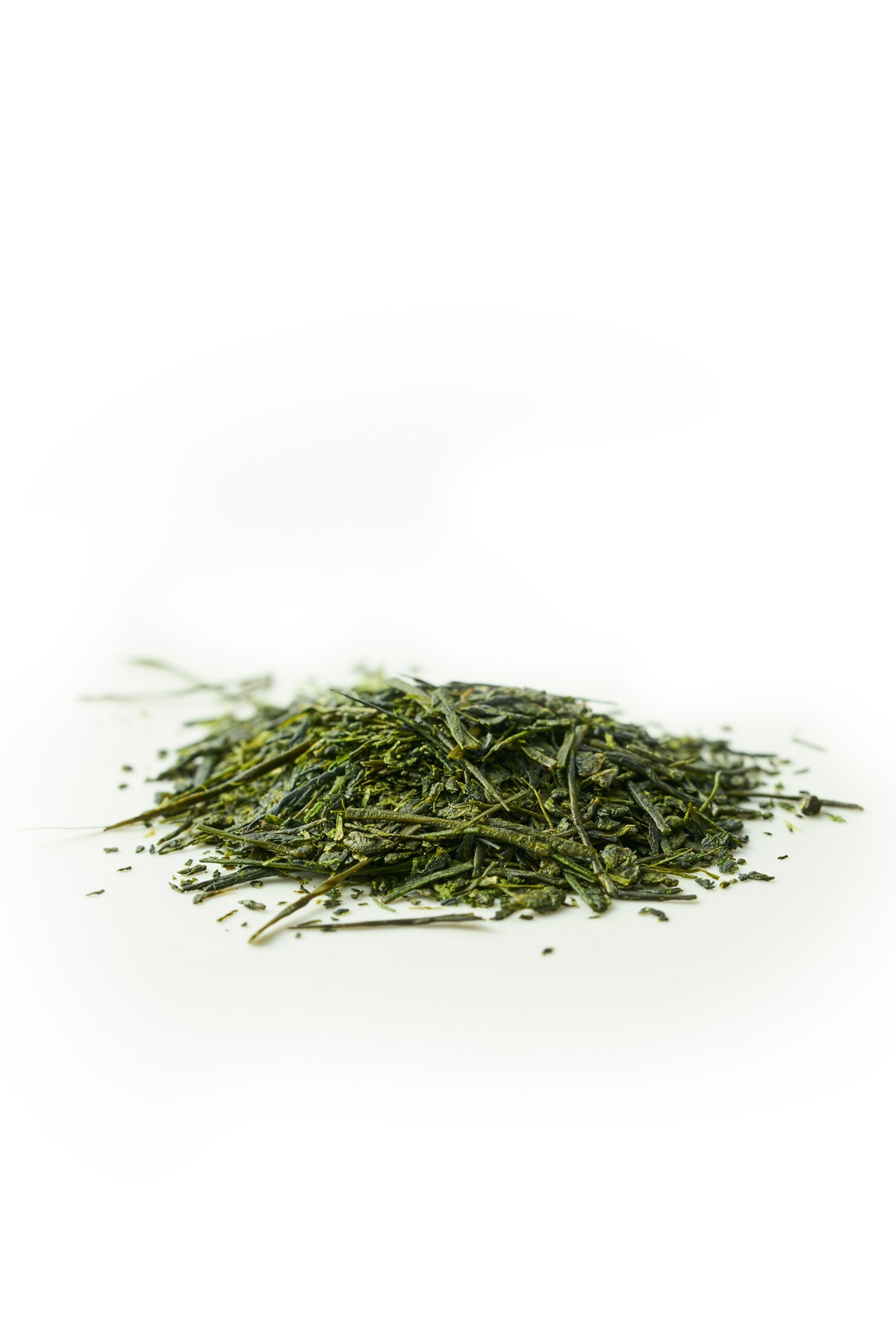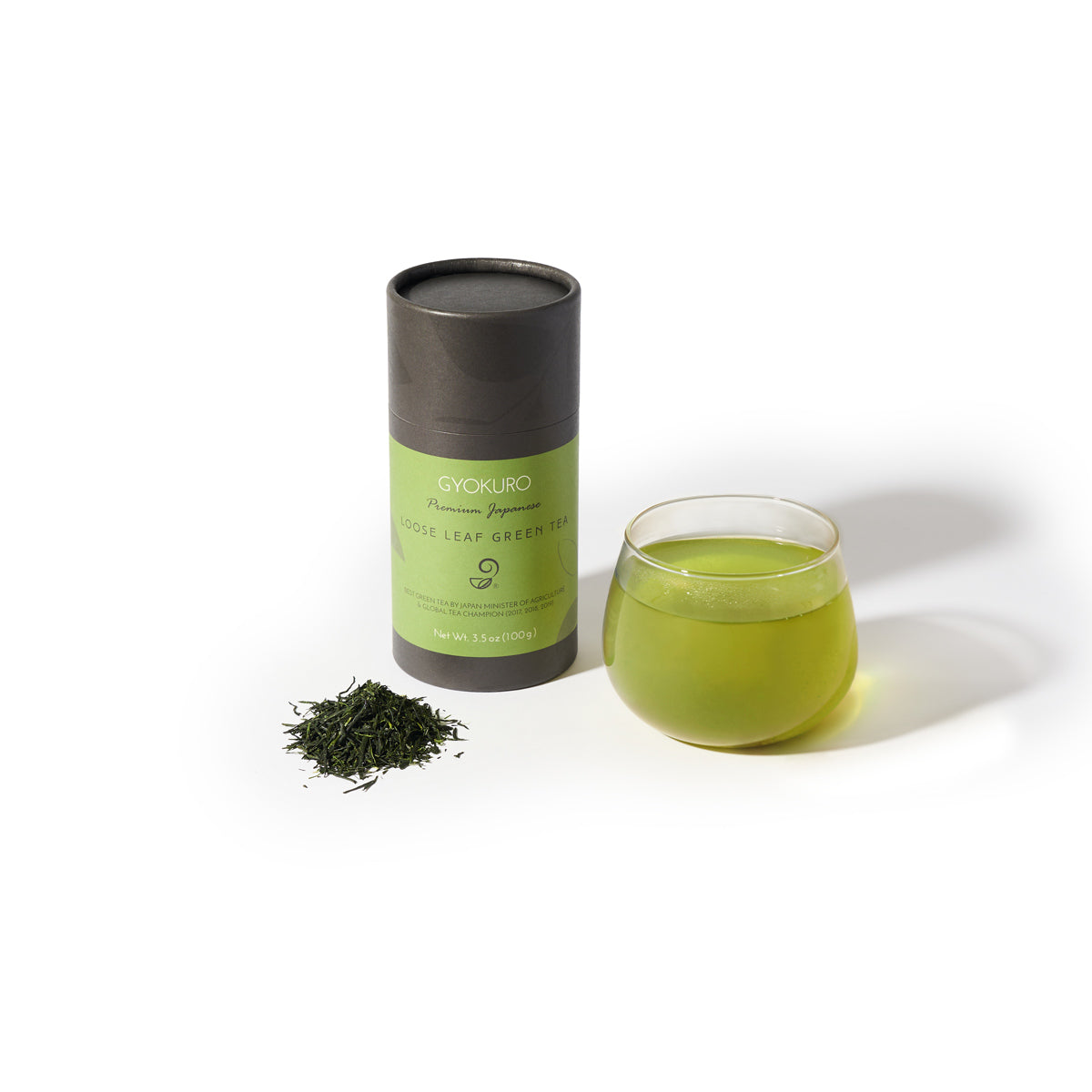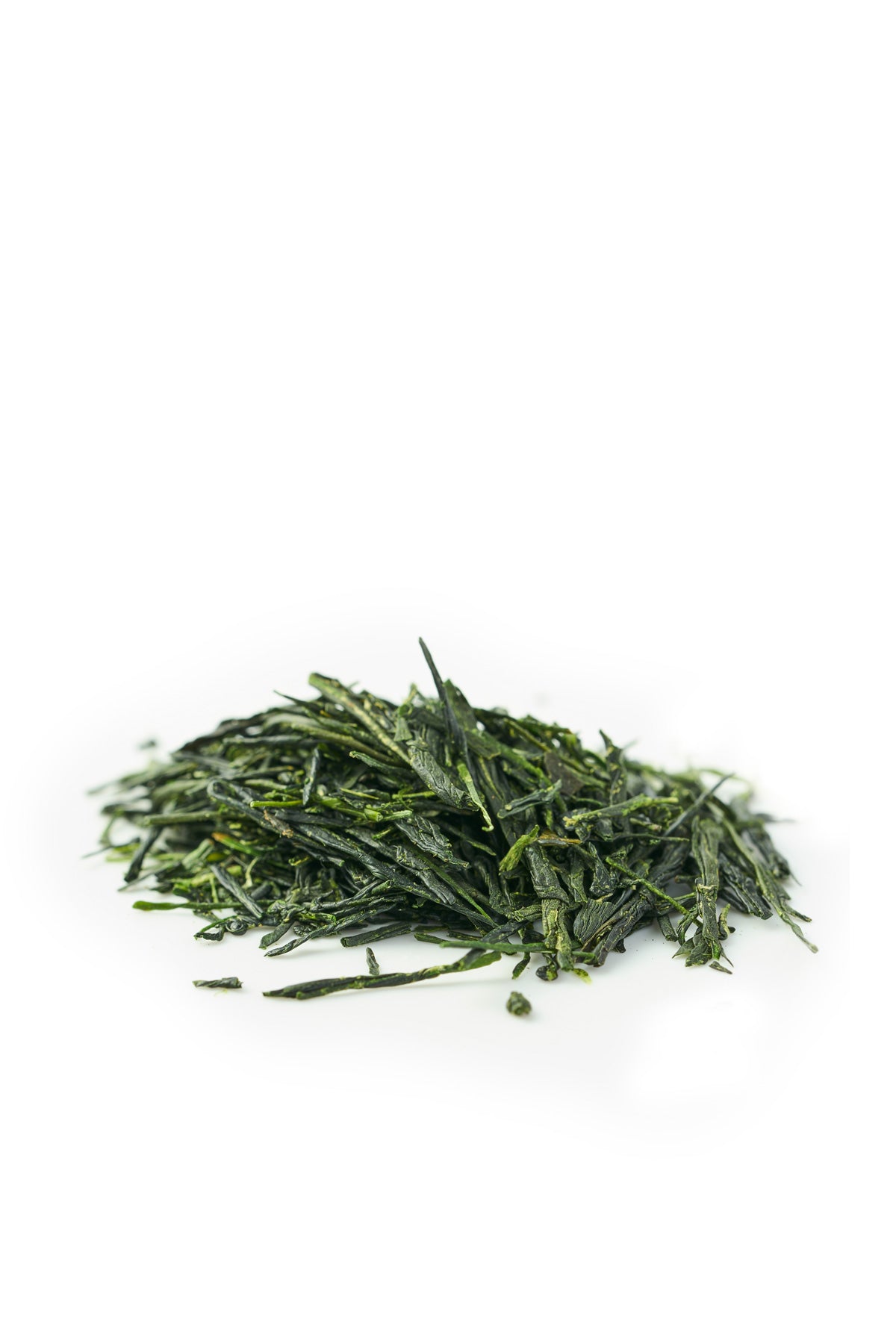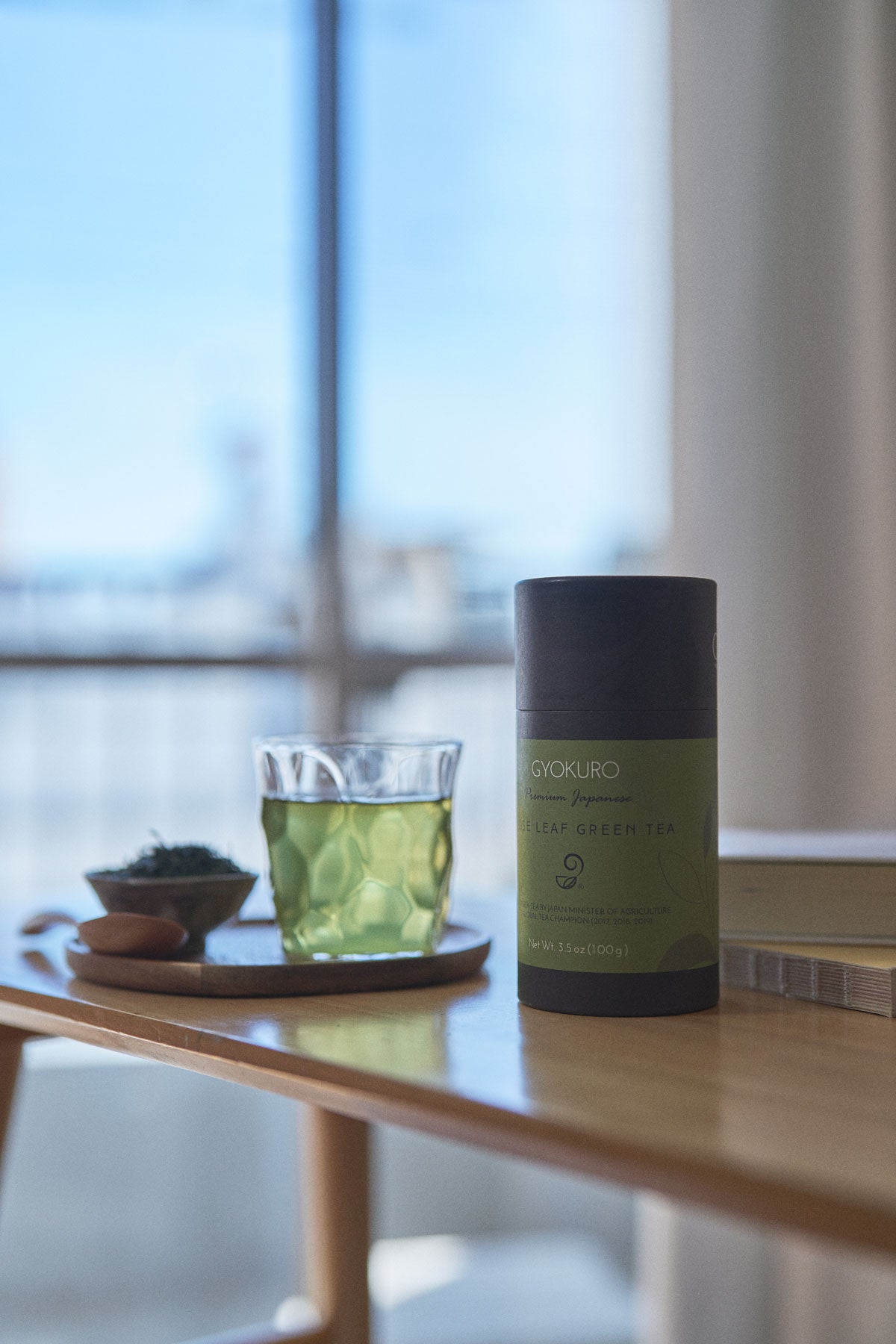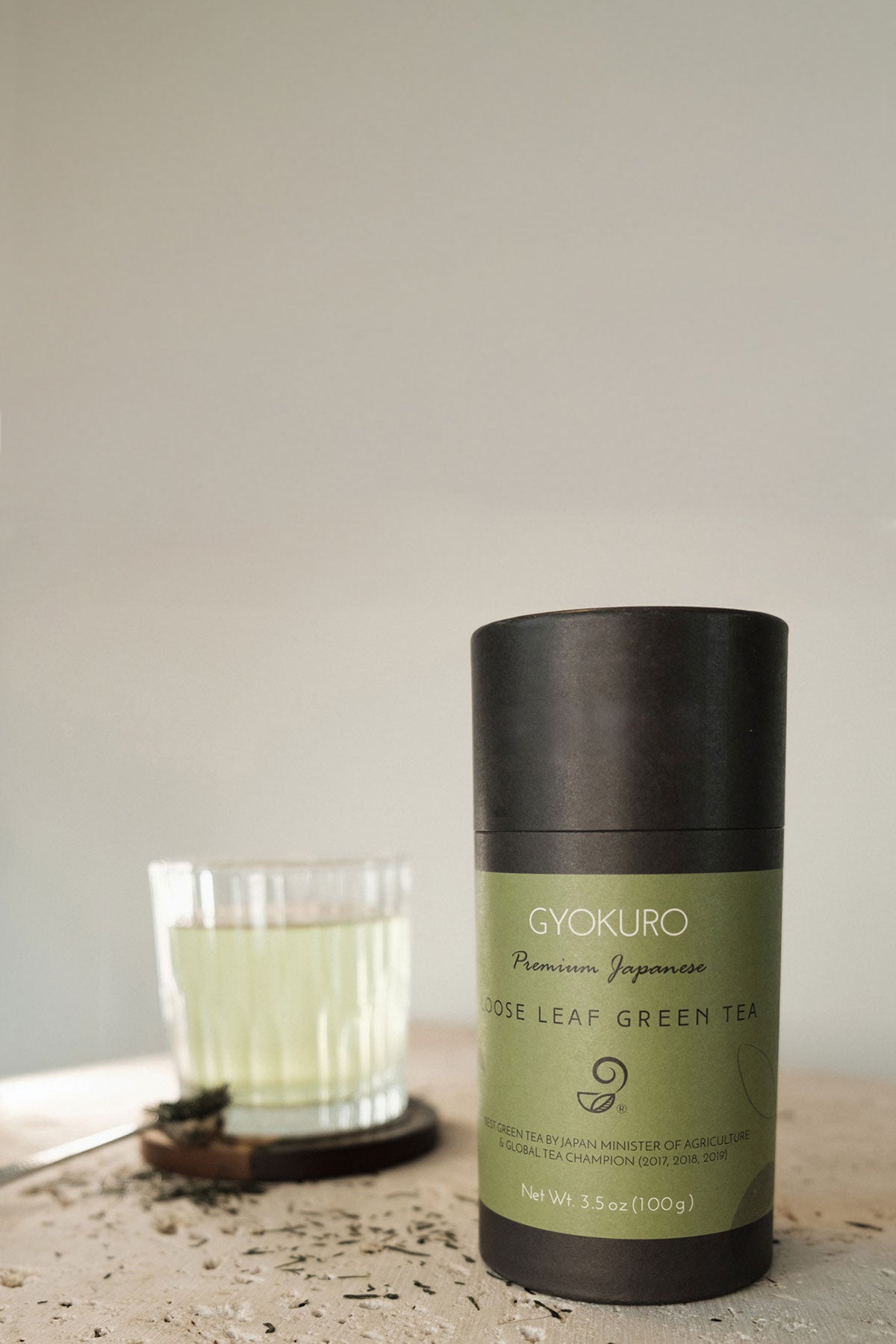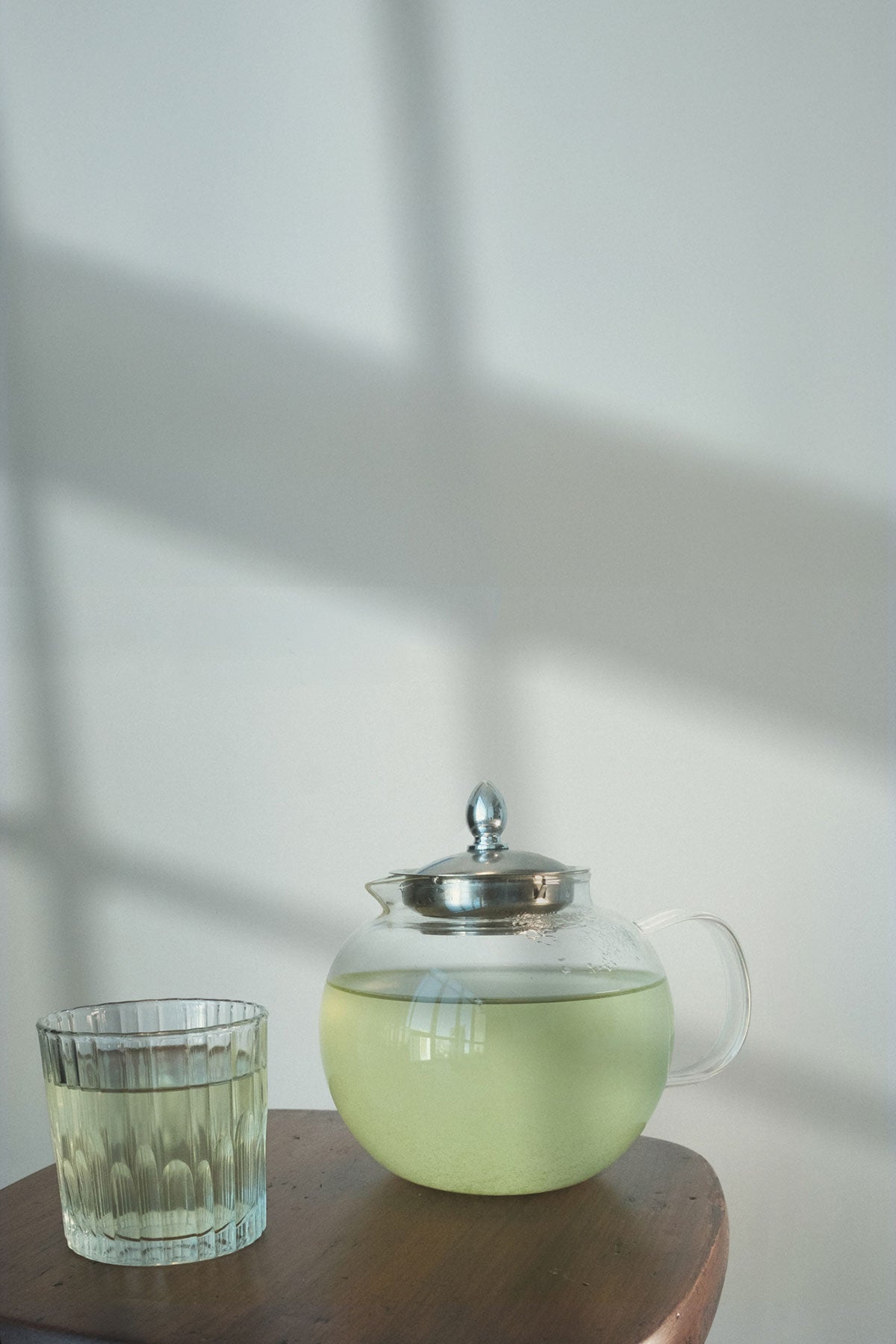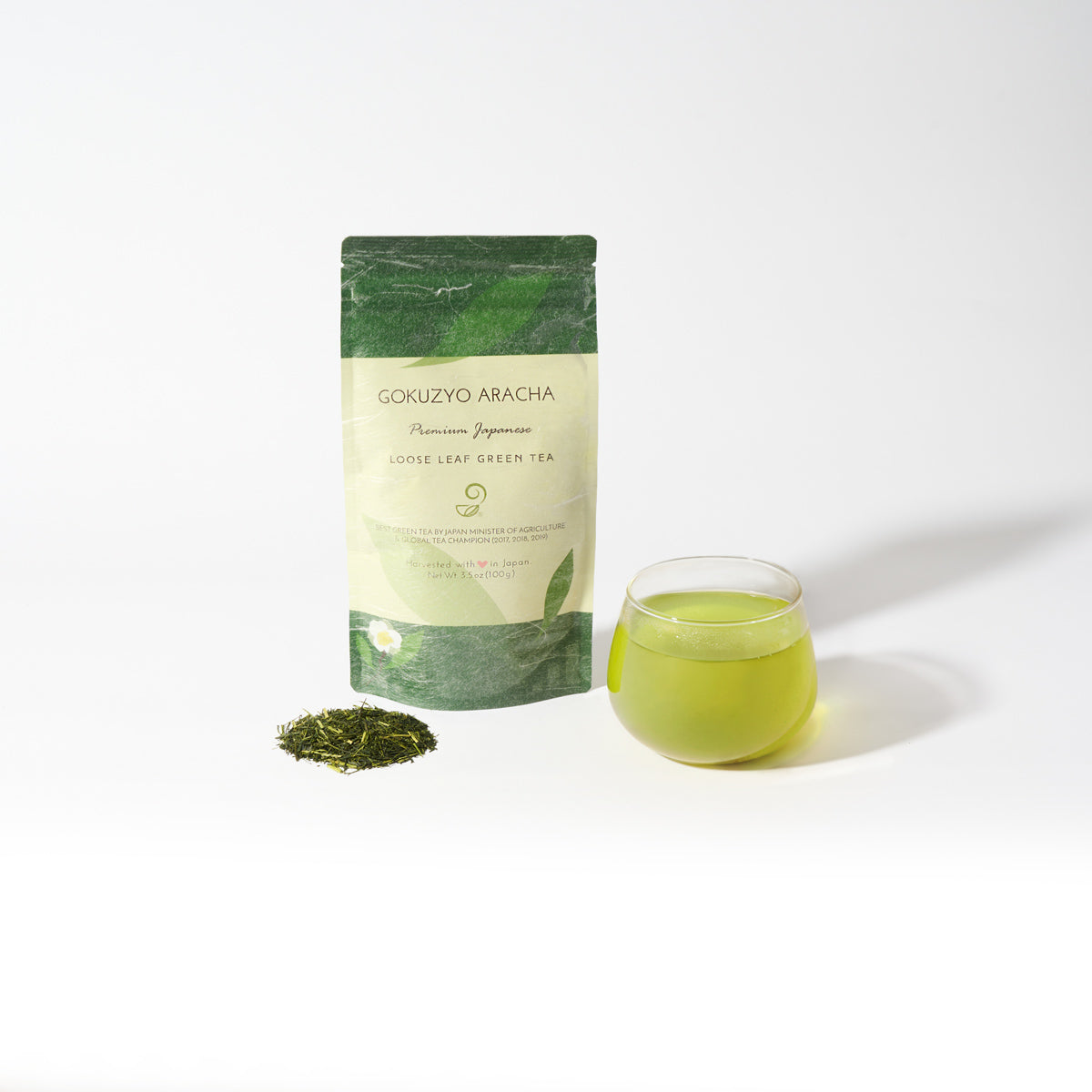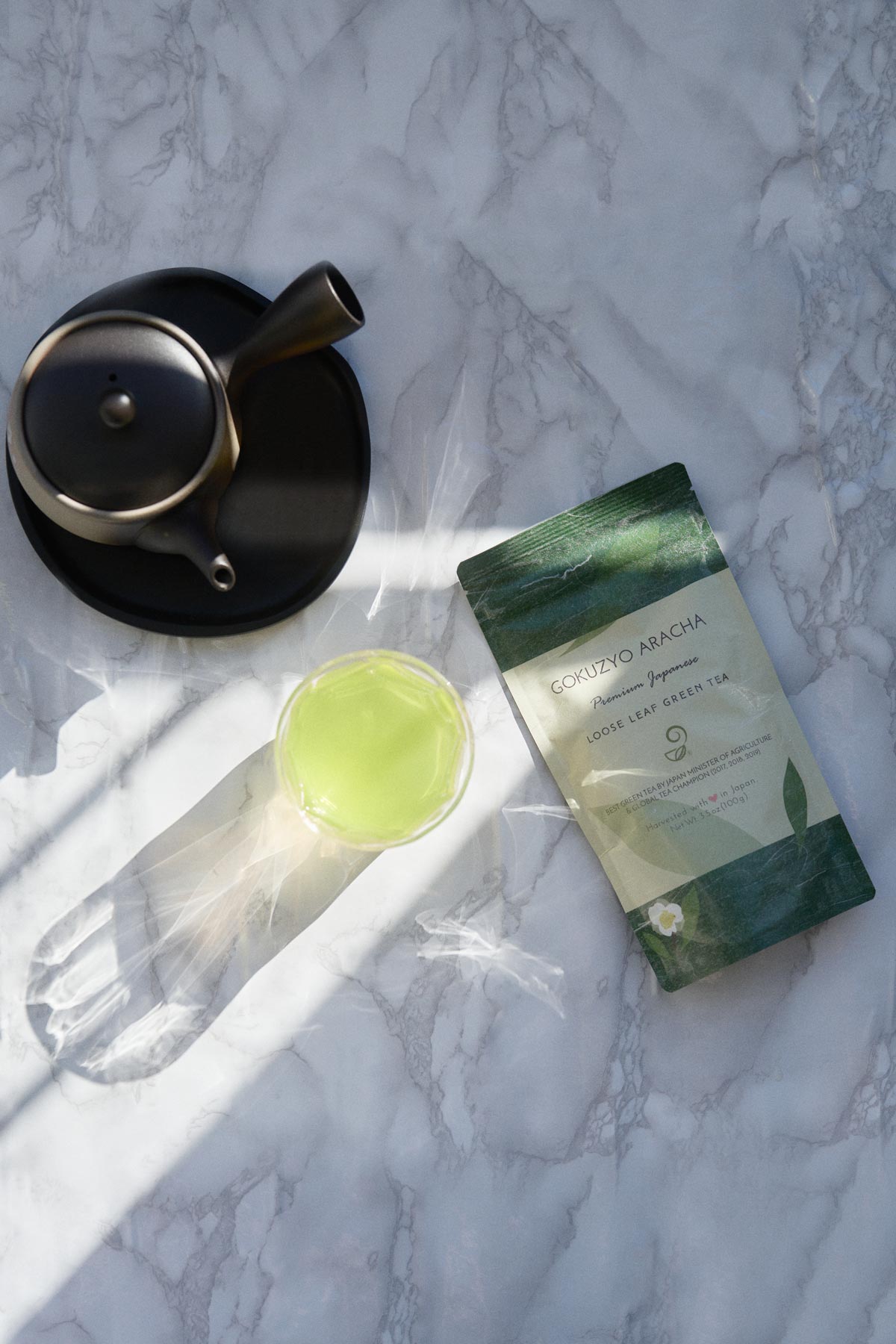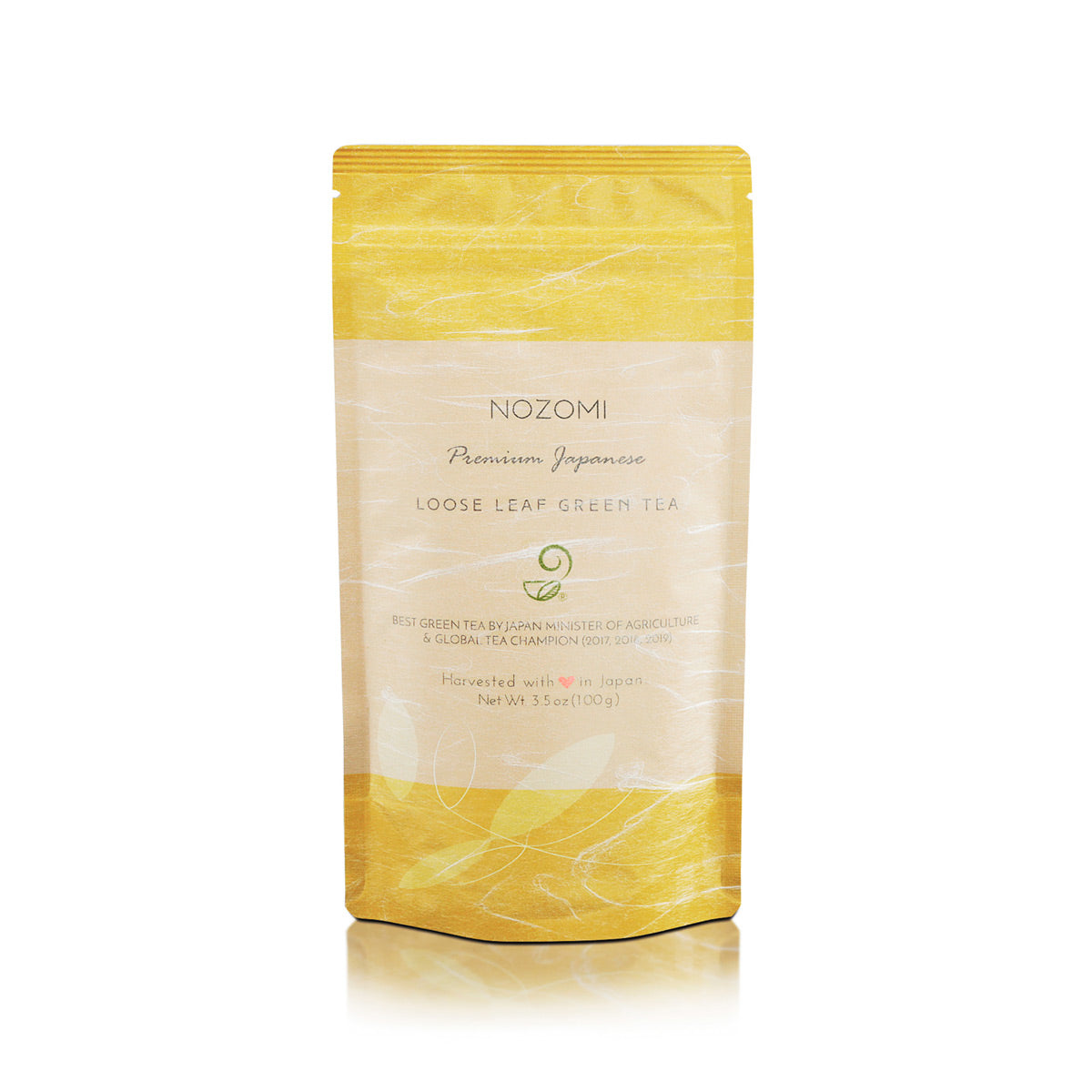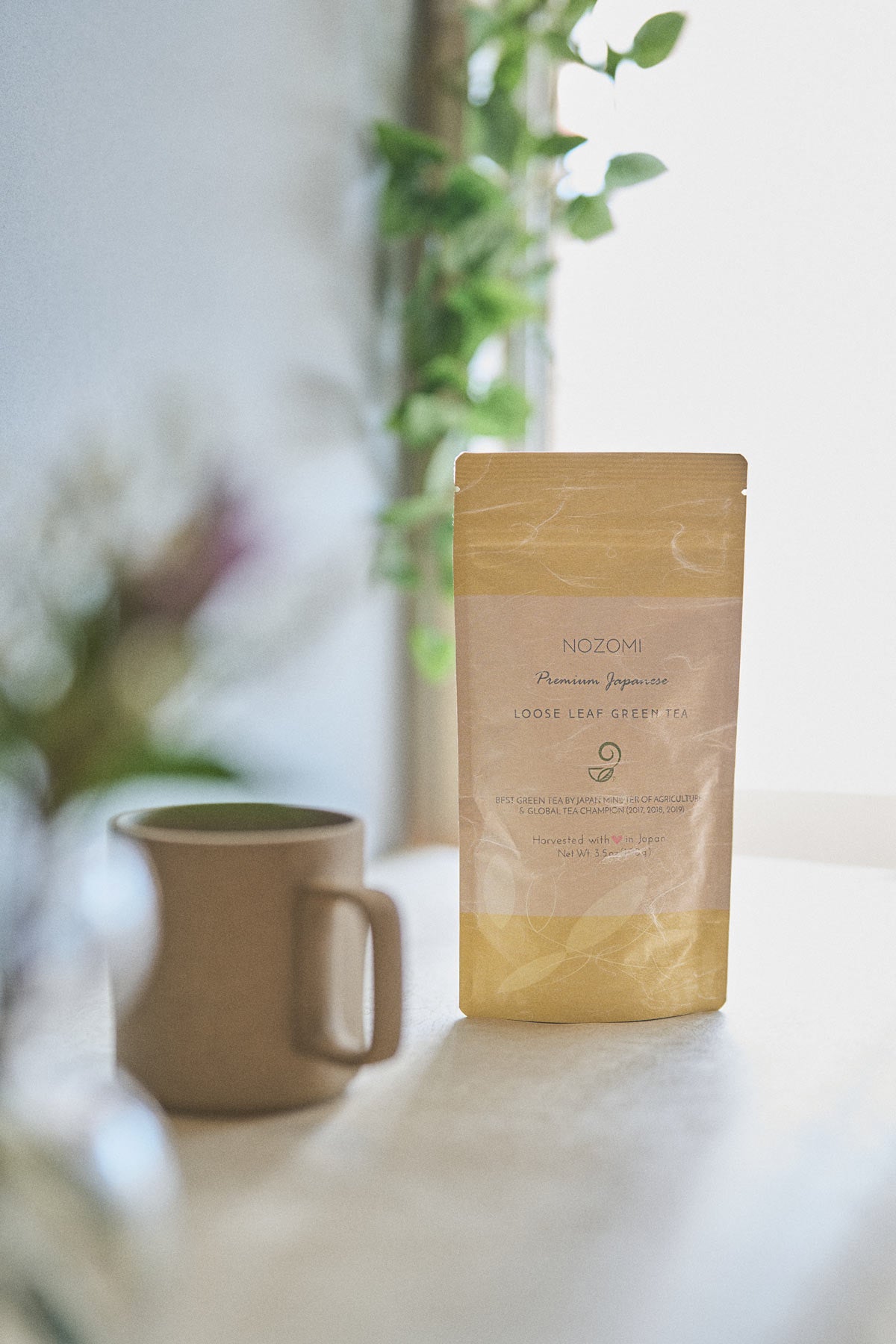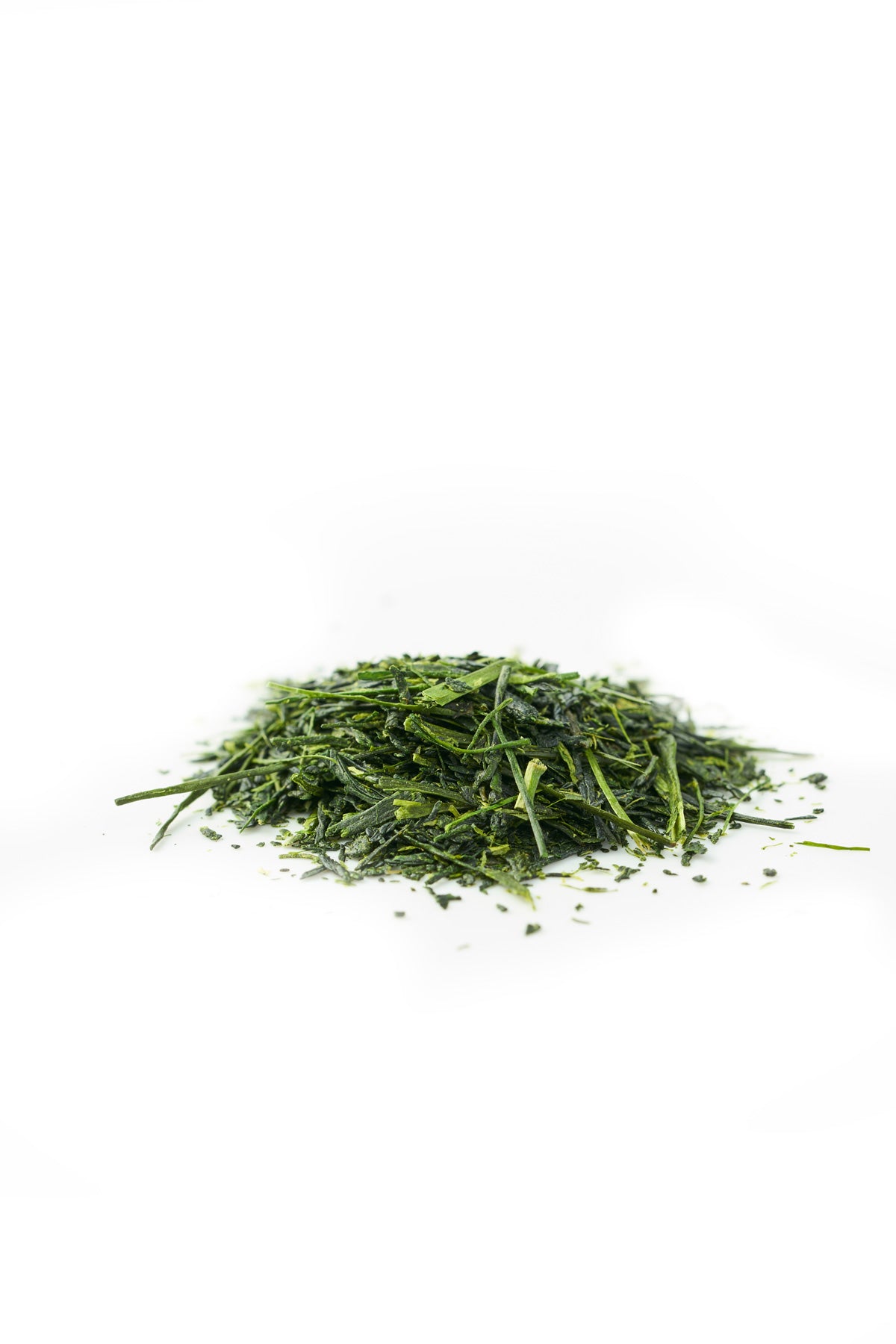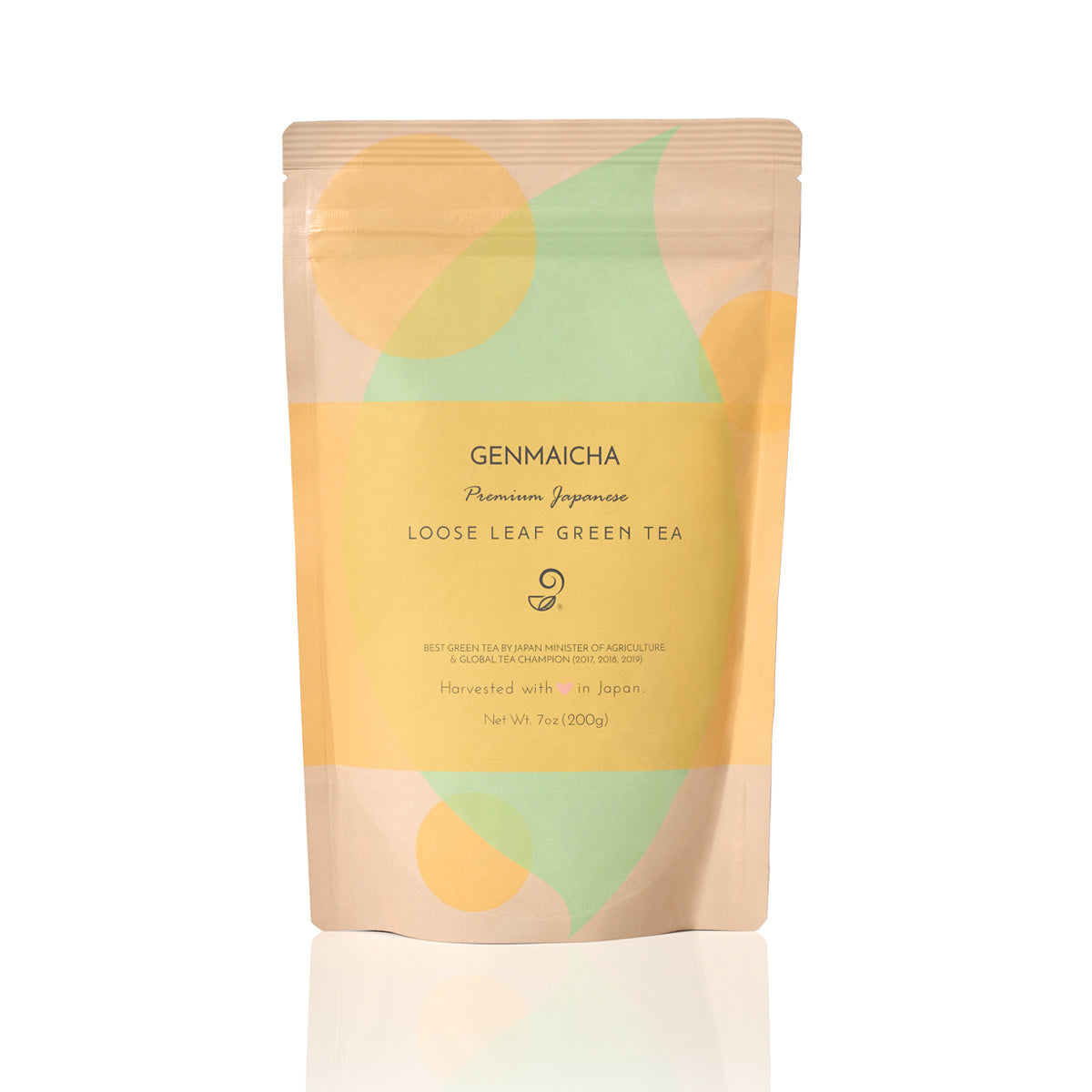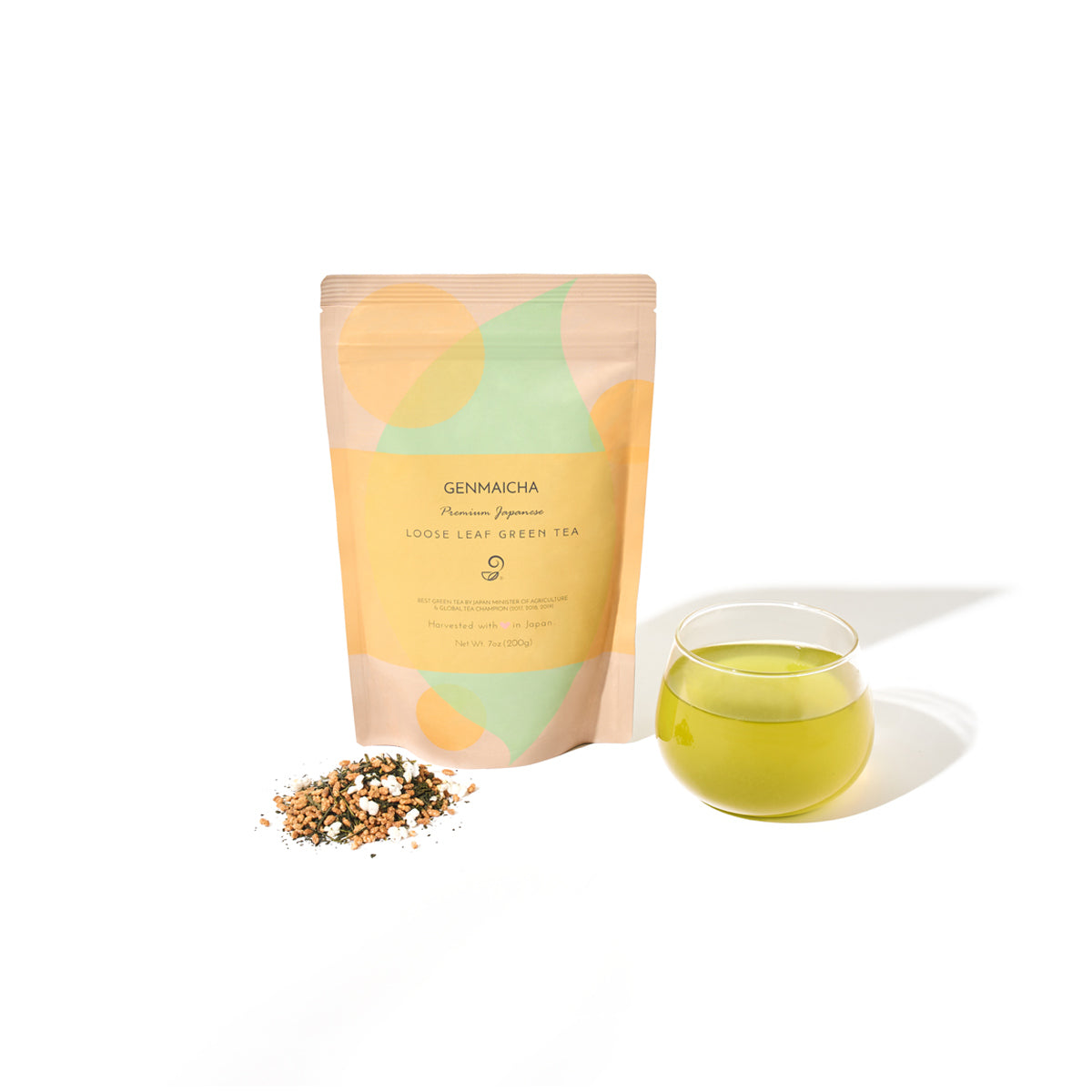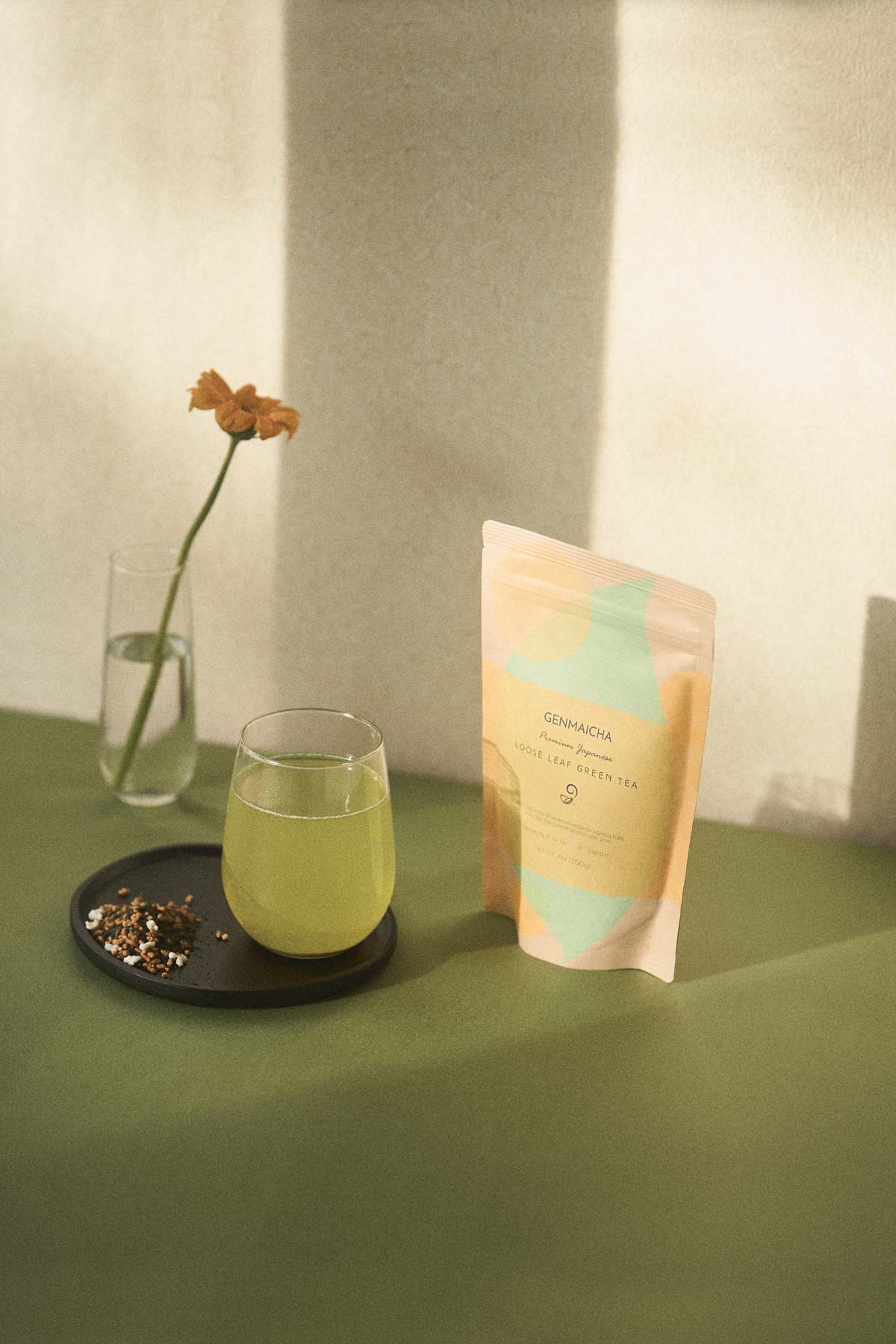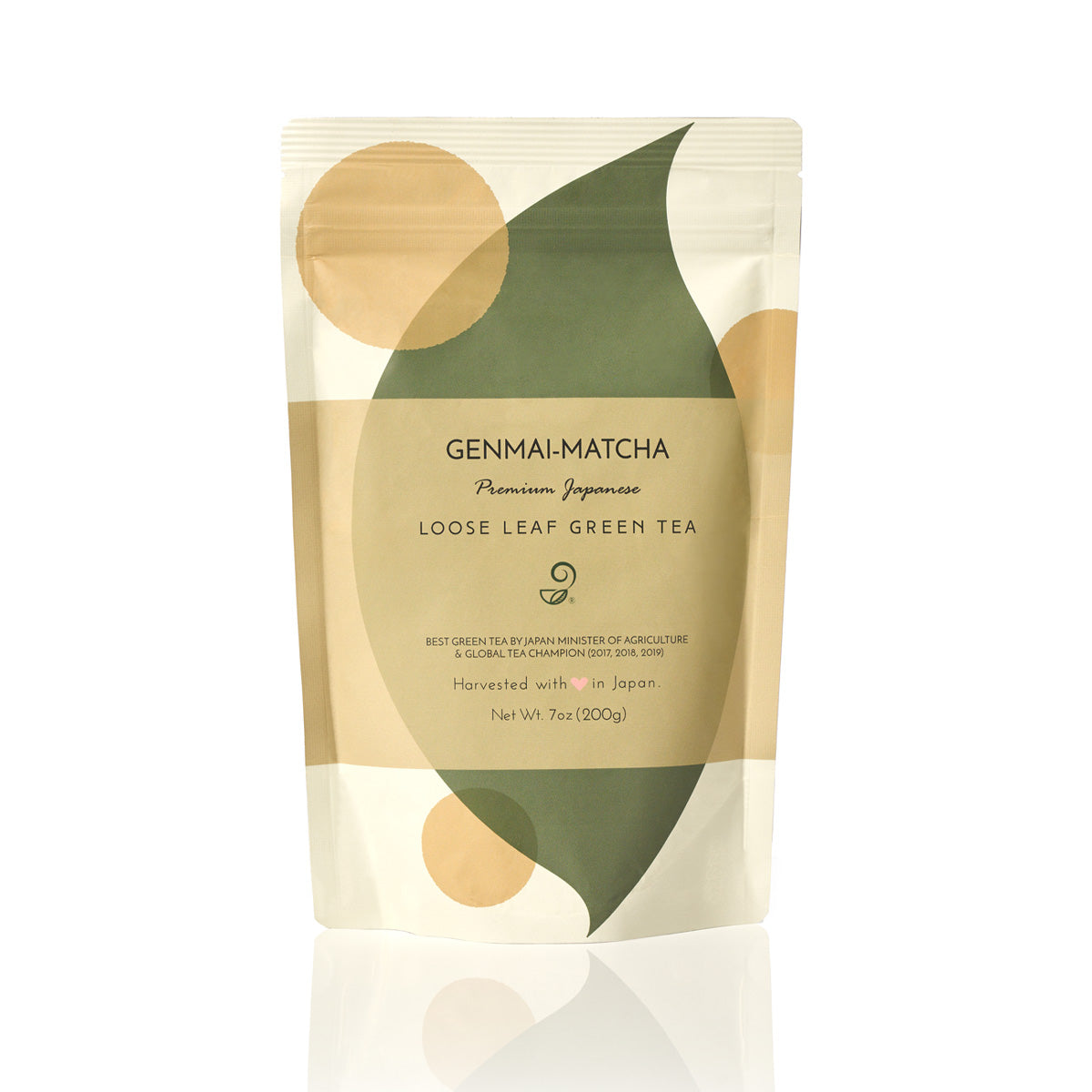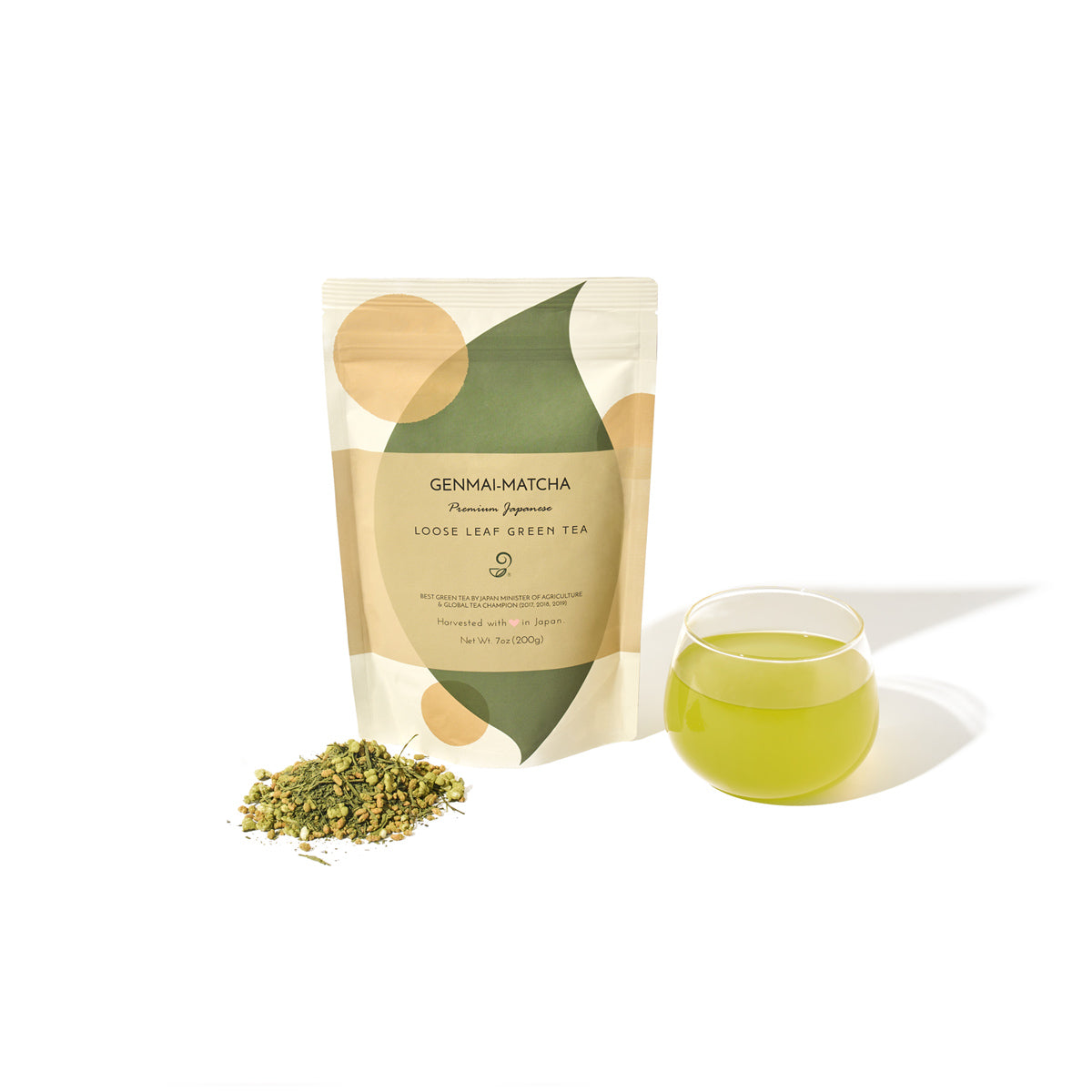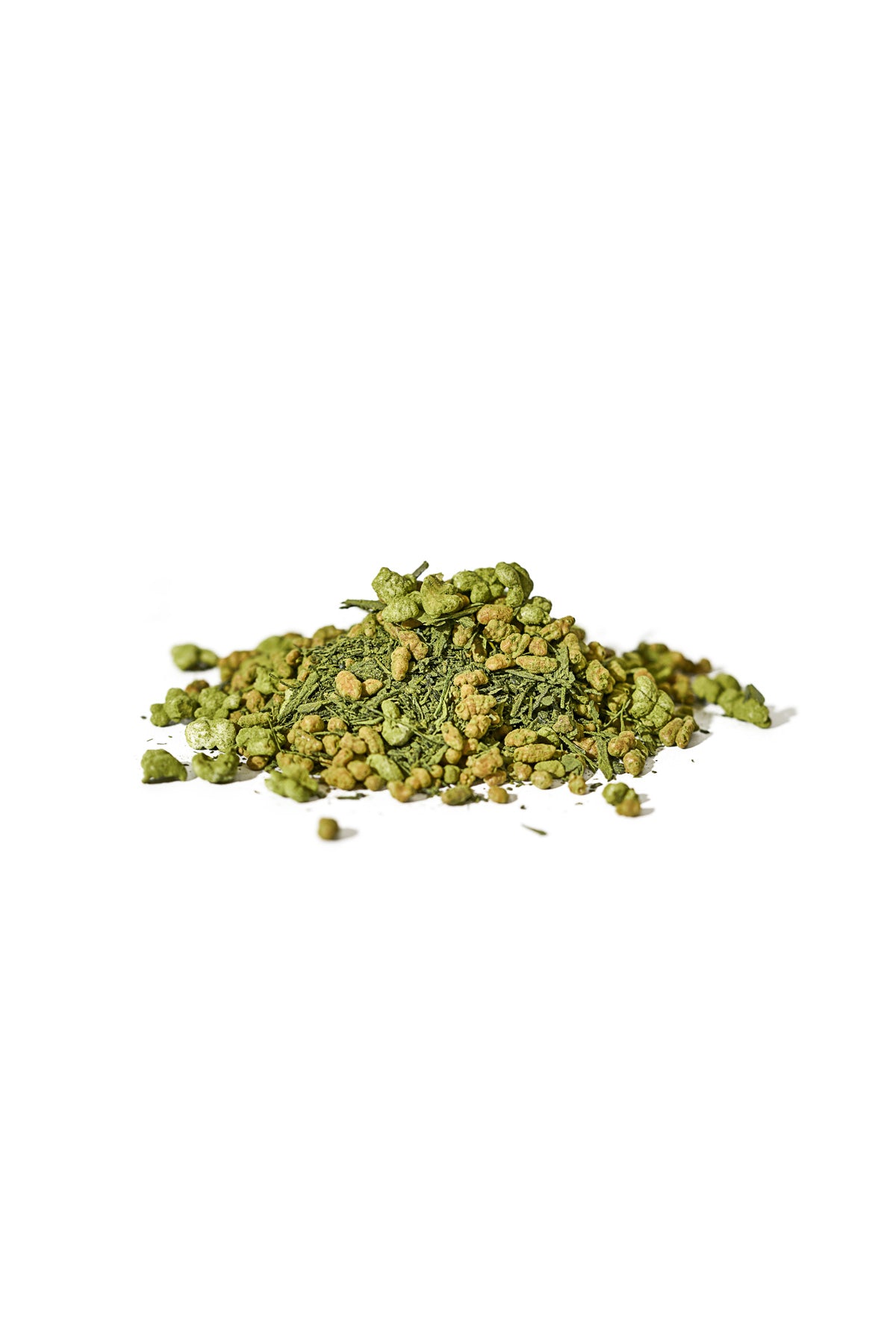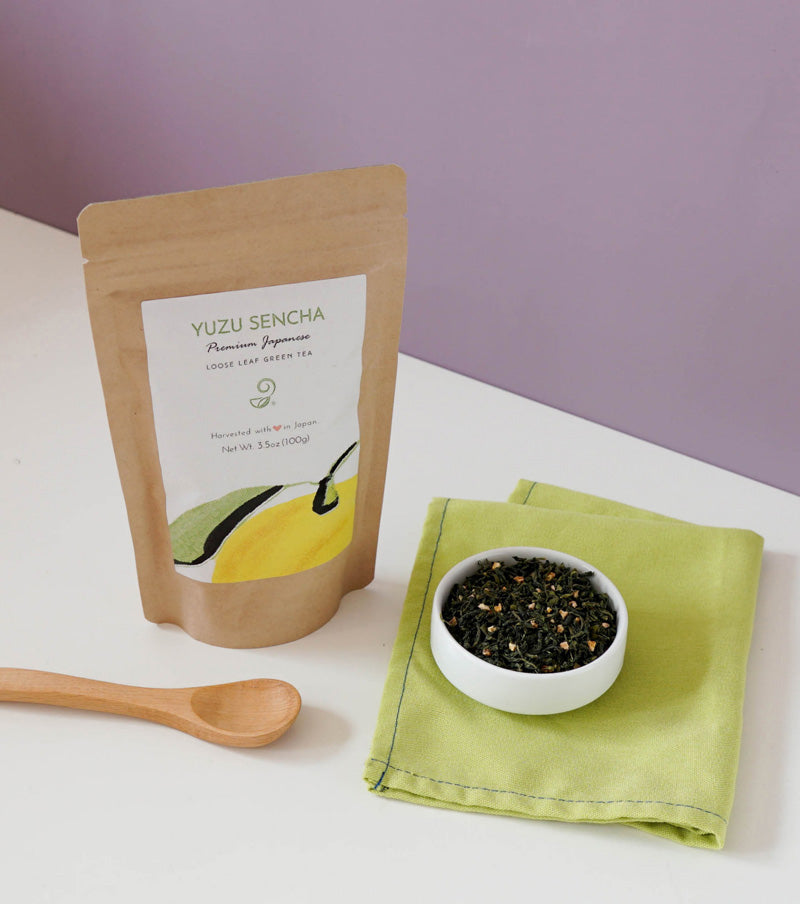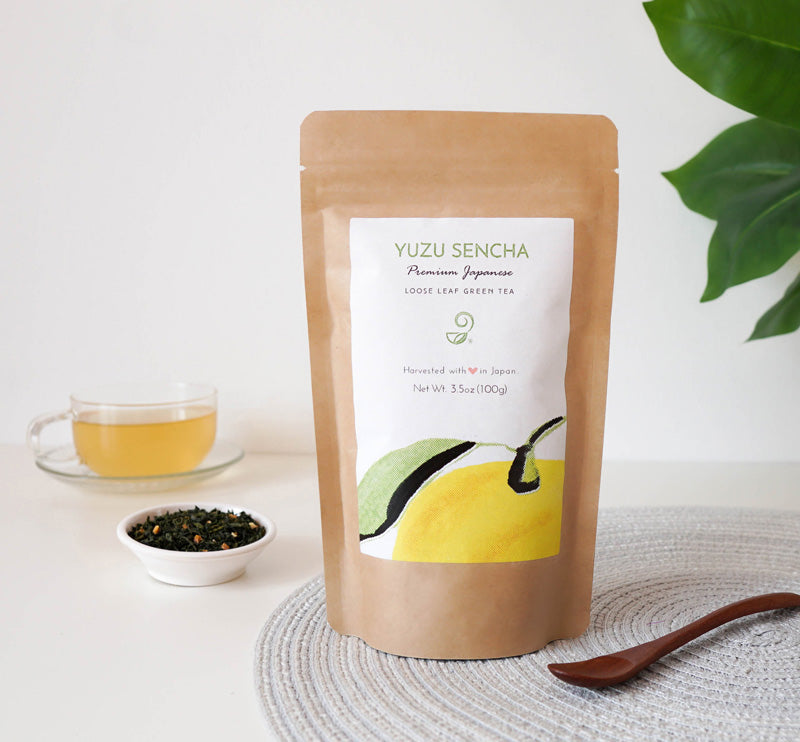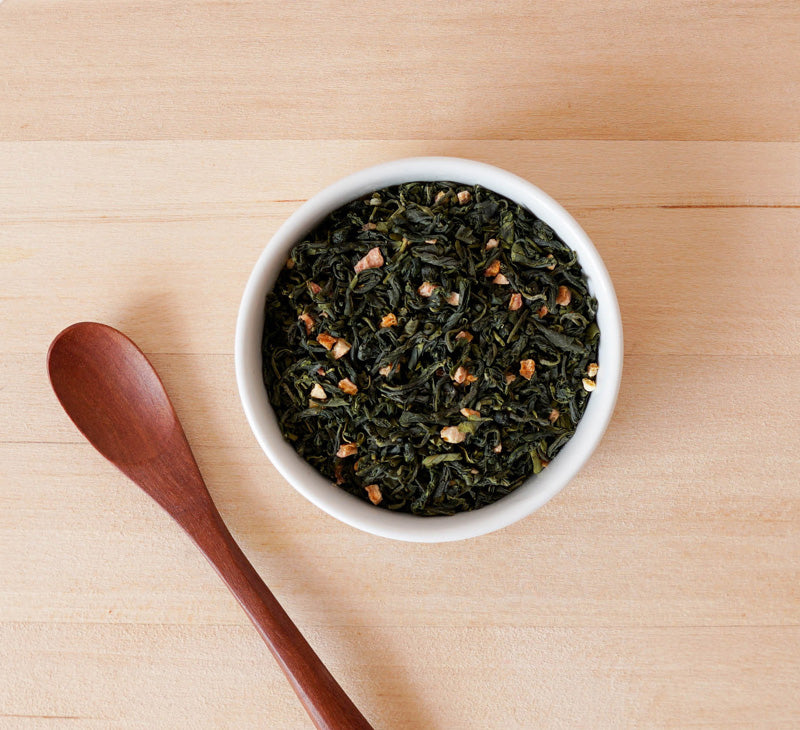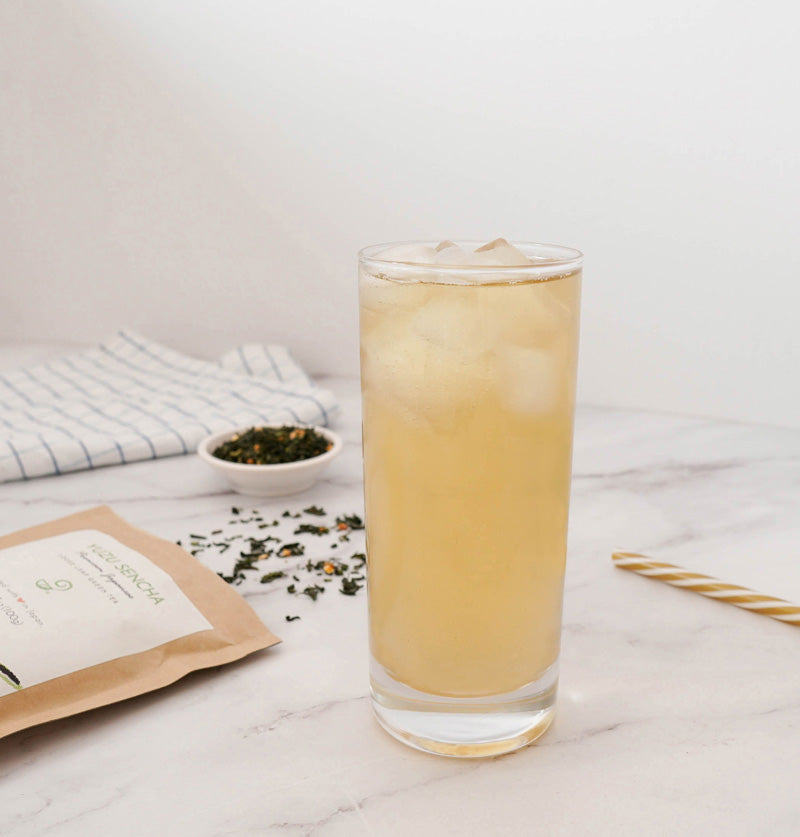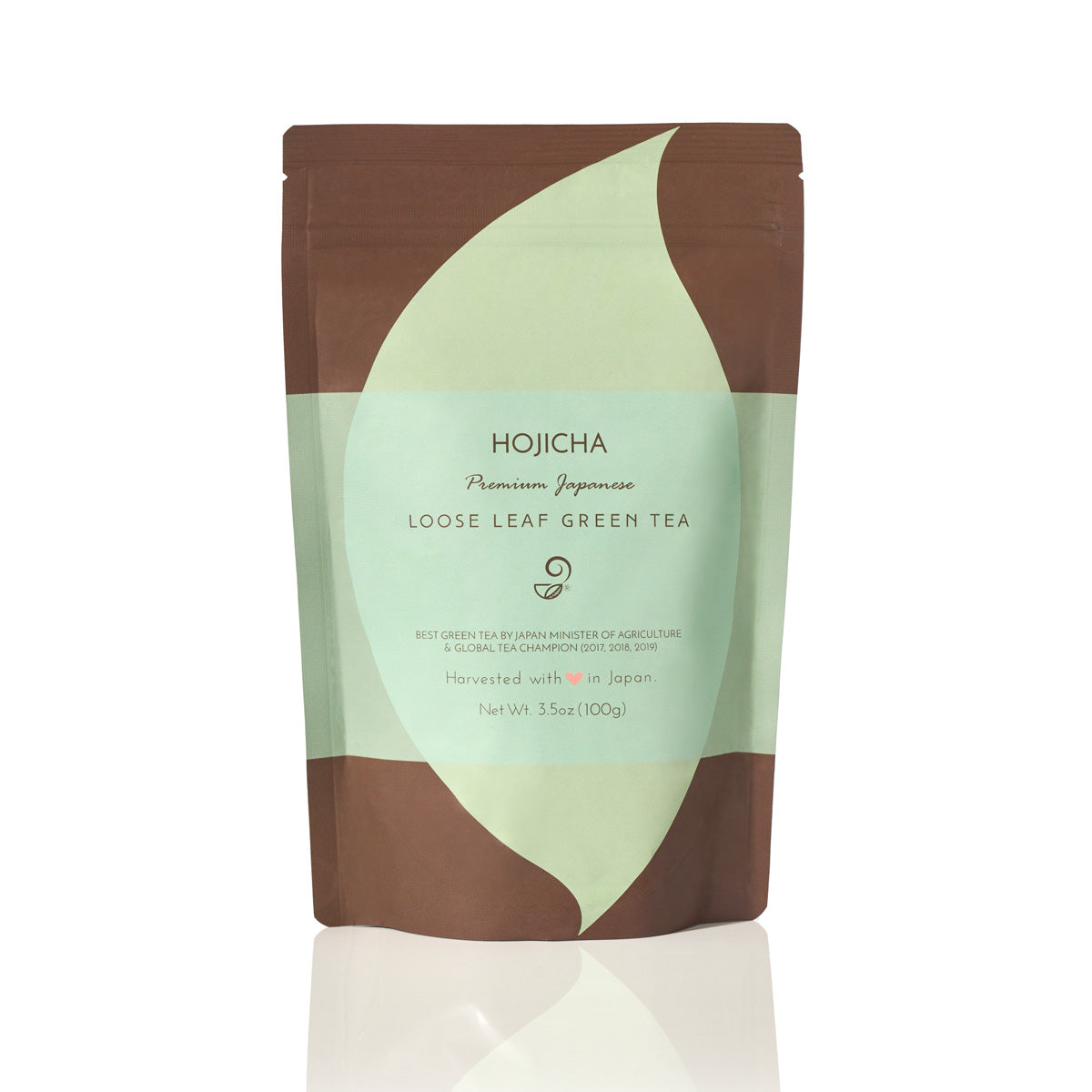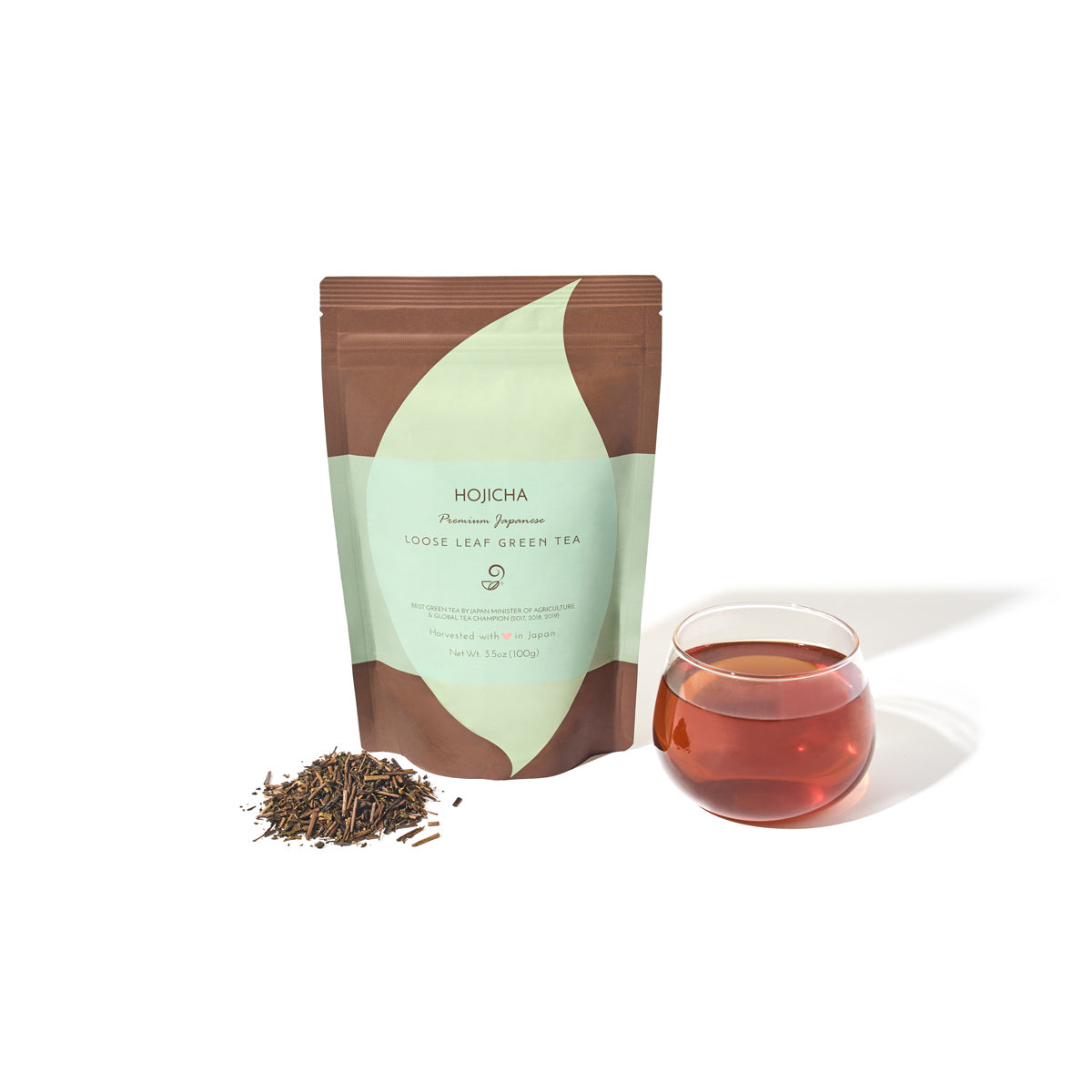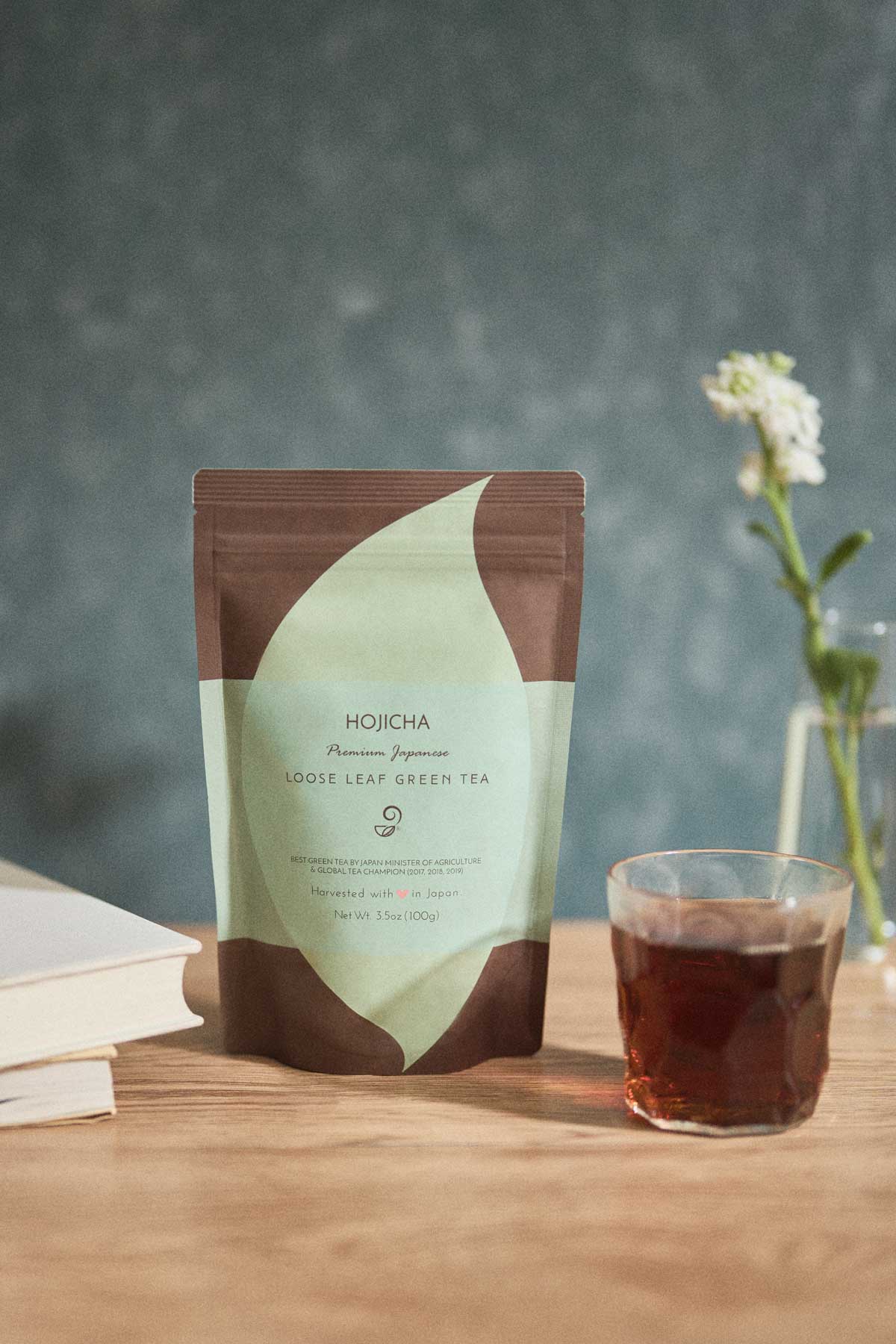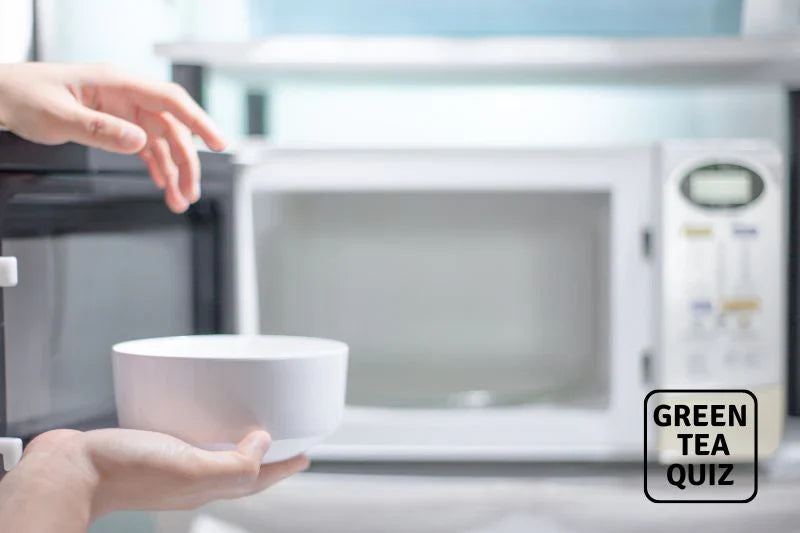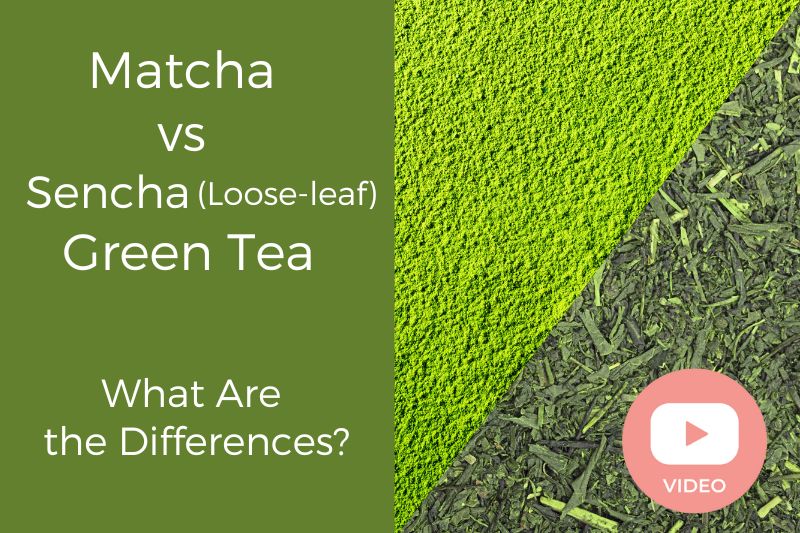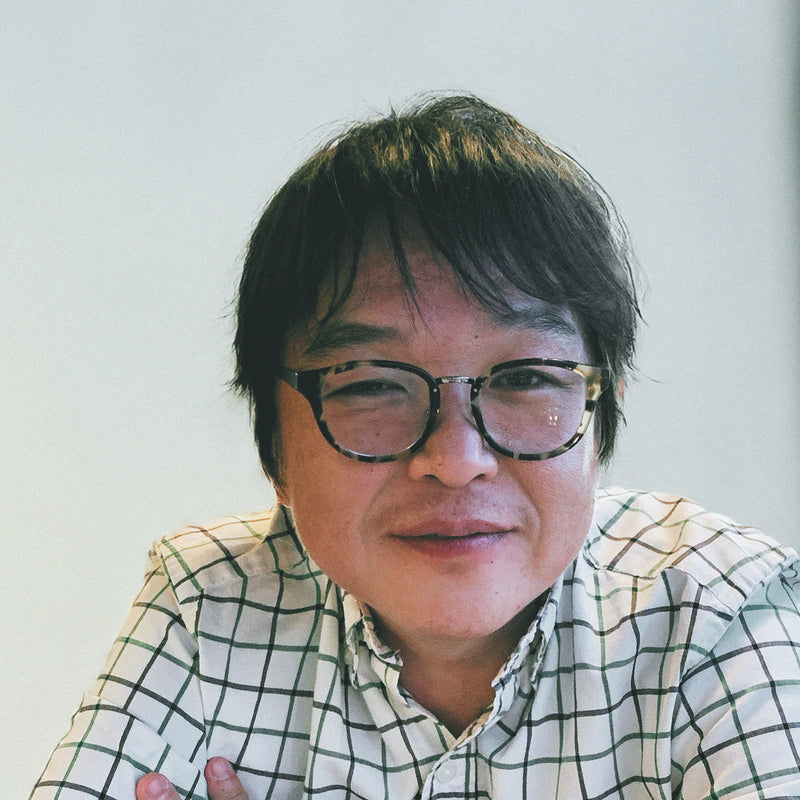As my followers know, Japanese green tea is a major part of my life. Green tea has also become a very important aspect of many cultures. Each culture has created its own traditions for brewing and serving green tea.
This tradition includes the use of teaware or teapots for brewing Japanese green tea. Traditional Japanese teapots are called "kyusu" A kyusu is designed specifically for brewing Japanese green tea.
When we talk about green tea quality and taste, there is a great difference between loose leaf green tea and teabags in general. And, although brewing loose-leaf Japanese green tea (sencha) may be a bit more detailed or require more steps, the result is well worth the effort.
So, we’re focusing today on the best teaware for brewing loose-leaf Japanese green tea (sencha). To know the right tea pot to use, read on for my insight. There are a few things to consider.
A helpful way to choose is to match the kyusu style and build to the tea and your routine. Side-handle yokode-kyusu offers quick, controlled pours ideal for sencha; back-handle ushirode-kyusu feels familiar if you use Western teapots; handle-less hohin excels for lower-temperature brews like gyokuro. Look for a built-in fine mesh (sasabami) or ceramic ball filter that lets leaves expand freely while preventing clogs, a capacity around 180–360 ml for precise multi-infusions, and thin, heat-responsive walls that won’t overcook delicate leaves. A wide mouth simplifies leaf loading and cleaning, while a short, tapered spout aligned with the handle reduces drips and helps you finish each infusion quickly—key to clean, sweet flavors. Choosing teaware with these details ensures your pot supports correct water temperature, full leaf expansion, and fast, even pouring—three fundamentals of great Japanese green tea.
The Design Should be More Function than Form
Of course, the design of your teapot should be attractive. However, I believe the teapot should be functional.
Is the teapot heavy? Does it maintain the temperature of the tea? Is it easy to clean?
You want your teapot to be easy to handle, with a sturdy lid and a wide opening to allow tea leaves and water to flow.
The spout should be stout and line up with the handle for easy pouring. To avoid dribbling when pouring, the spout should be tapered with a wide base and narrow tip. The spout should also reach above the body of the teapot for ease of pouring. The inside of the spout should be smooth, which allows the green tea to stream smoothly.
When choosing your teapot, also pay attention to how the balance and ergonomics feel in your hand. A well-designed kyusu or kettle should pour effortlessly even when full, without forcing you to twist your wrist or grip tightly. The handle angle, lid fit, and spout alignment together influence how smoothly the water flows and how much control you have over pouring speed—crucial for steeping delicate Japanese teas at the correct temperature and duration. Subtle design details such as a vent hole on the lid to prevent sputtering, a flat base for stable placement, and even wall thickness for consistent heat retention all contribute to a better brewing experience. These small but important touches distinguish a purely decorative pot from one engineered for precision, comfort, and long-term use.
The Materials Used in the Tea Ware is Important
The material used to make the teaware is important. The raw material of the teaware can affect the taste and quality of green tea. The material also impacts preferences for appearance, weight, maintaining tea temperature, and ease of cleaning.
Each material interacts differently with both heat and flavor, shaping the character of every brew. Porous materials like clay absorb trace amounts of tea oils over time, subtly enhancing the depth and aroma of future infusions—a reason seasoned teapots are treasured in Japanese tea culture. Non-porous materials such as glass or stainless steel, on the other hand, preserve the tea’s original purity, making them ideal for testing or comparing different green teas. The thermal conductivity of the material also matters: cast iron retains heat for long, gentle steeps, while thinner ceramics cool faster, giving you more control over delicate teas like gyokuro. Even the glaze or enamel coating influences performance, preventing metallic tastes or stains and simplifying maintenance. In short, the material you choose determines not only how your teapot looks and feels, but how faithfully it delivers the nuanced flavor profile of authentic Japanese green tea.
Many options exist for the design of green teapots.
The Cast Iron Tea Ware is Classic and Durable

The cast iron tea pot, oftentimes called a Japanese tetsubin, is fashioned with a spout from cast iron. Originally, tetsubin was the name given to a Japanese cast iron pot used to boil the water for tea directly on a heating source (such as hot coals). However, modern designs have incorporated an enamel internal finish to allow the tea pot to be used for green tea brewing. Many cast iron tetsubins have an internal strainer to further allow for the convenient brewing of Japanese green tea.
Beyond their functionality, tetsubin teapots hold a special place in Japanese tea culture, symbolizing strength, endurance, and refined simplicity. The intricate exterior patterns—such as hobnail (arare) or wave (nami) designs—are not just decorative but improve grip and heat distribution. Traditionally, these pots were handcrafted by skilled artisans in regions like Iwate and Yamagata, where the craft of Nambu ironware originated centuries ago. The enamel coating found in modern tetsubin not only prevents rust but also preserves the tea’s clean, mellow flavor, making it suitable for brewing sencha or hojicha without metallic undertones. For enthusiasts, the weight and texture of cast iron provide a sense of ritual and grounding, turning each pour into a meditative act that bridges old-world craftsmanship with modern convenience.

The tetsubin is favored for its sturdy build, which is almost incapable of destruction. The original material is perfect to retain heat for an hour or more, allowing for an extended time to enjoy your hot, steeped green tea. Cleanup is simple, requiring a simple rinse in warm water and thorough drying (to avoid rusting). A bit of iron supplement can also be obtained when steeping with the tetsubin.
The negative aspect of cast iron tea ware is the weight of the cast iron, which some people disfavor. If a diffuser strain is not included, a separate strainer will be needed to separate the tea leaves.
For tea connoisseurs, another advantage of the tetsubin is its ability to enhance water quality. When used without an enamel coating, the trace iron ions released during boiling can subtly soften hard water, creating a smoother, rounder taste that complements the natural sweetness of Japanese green tea. However, this traditional method requires extra care—boiling plain water only, then pouring it into a separate teapot for steeping—to prevent oxidation and maintain the kettle’s integrity. Enamel-lined versions eliminate this maintenance concern, making them ideal for everyday brewing while still retaining excellent heat consistency. Whether you prefer the authentic raw-iron style or the modern enamel-coated variant, a well-made tetsubin blends practicality with timeless artistry, offering both durability and a distinct sensory experience in every cup.
Click here to purchase one that I personally use.
Clay Tea Ware Is the Most Traditional
Traditional Japanese green teaware is found in the clay teapots. Although many cultures rely on a clay teapot for the darker teas that are highly oxidized, the Japanese culture has long used the clay pot to brew Japanese green tea.
The clay teaware is both classic and refined. Depending on the type of clay used, some clay teapots, like the beloved Tokoname Yaki, can enhance the flavor and aroma of green tea.
Although the iron-rich red clay of the Tokoname Yaki will enhance each steeping with the memory of the former, most clay tea ware will not. Regardless of your preference, the clay teapot design is very sturdy and durable over time.
One of the most fascinating qualities of Japanese clay teapots is how their porous structure interacts with the tea itself. Over time, the interior surface gradually absorbs minute tea oils, developing a subtle seasoning known as “shibumi”, which enriches the depth and smoothness of future brews. This makes each pot unique to its owner and the type of tea most often brewed in it. Clay teapots like Tokoname, Banko, and Shigaraki are hand-shaped or wheel-thrown by skilled artisans, with each region’s soil imparting its own mineral character and hue—from Tokoname’s warm red tones to Banko’s purplish-gray finish. Their natural thermal properties allow for even heat retention and gentle temperature control, preventing delicate leaves like sencha or gyokuro from burning. This union of artistry and chemistry has made clay teaware a treasured part of Japan’s tea heritage, valued as much for its craftsmanship as for the harmony it brings to each pour.
Click here to purchase the Tokoname Yaki Teapot.
Glass teaware is Beautiful and light.
The beautiful glass teapots allow you to admire the beautiful green tea leaves brewing as they change the water's color to bright green.
Glass teapots disperse the infusion quickly without affecting flavor. This is perfect for Japanese green tea. The design is lightweight and truly indispensable when brewing and serving blossoming teas. Clean-up is simple with the glass teaware.
The beauty of the glass tea ware is marred only by its fragility, which makes it susceptible to breaking when serving and cleaning.
Beyond their visual charm, glass teapots are prized for their neutrality and precision. Because glass is non-porous, it doesn’t absorb flavors or aromas, ensuring that each brew tastes exactly as intended—fresh, clean, and true to the leaf. This makes it an excellent choice for tea drinkers who like to experiment with different Japanese green teas, such as sencha, genmaicha, or kukicha, without lingering flavors from previous brews. The transparency of glass also provides a meditative experience: you can observe the dance of unfurling leaves and monitor steeping strength in real time. Many modern glass teapots feature borosilicate glass, which is more resistant to heat shock and daily wear, offering a bit more durability than standard glass. While they still require gentle handling, glass teapots beautifully blend aesthetic enjoyment with brewing accuracy, turning each cup into both a sensory and visual experience.
Porcelain and Ceramic teaware are classic.
Porcelain pots are considered classic teaware with their adaptability to different types of tea. They are best used for lightly oxidized teas, such as green tea and white tea.
The porcelain and ceramic teapot is very versatile because it does not absorb the tea’s flavor, so it can be used for many different teas without requiring a separate pot for each.
You will find the porcelain or ceramic teapot has a tendency to become stained by tea residue, and it doesn’t maintain heated tea for very long.
Porcelain and ceramic teapots have long been admired for their balance of elegance and practicality, making them staples in both traditional and modern tea settings. Their smooth, non-porous glaze ensures that every cup delivers a clean and consistent flavor, allowing the delicate sweetness and grassy notes of Japanese green tea to shine through unaltered. These teapots are often favored for formal tea presentations, as their refined white or delicately painted surfaces highlight the vivid color of the infusion.
While porcelain tends to be lighter and more translucent, ceramic teapots offer a slightly thicker build, providing better heat retention and a comforting hand feel. Many artisans also craft hybrid designs—porcelain interiors with ceramic exteriors—to merge function with artistry. Though they may stain over time, a light patina is often seen as part of the vessel’s story, symbolizing years of shared tea moments and hospitality.
Silver teaware is beautiful.
Silver teapots are known to give a refreshing water quality to Japanese green tea. Silver is fine for soft teas, such as green tea and white tea. They are also beautiful to look at.
The negative thing about silver teapots is that they are difficult to maintain due to their propensity to tarnish and are probably the most expensive teaware.
Beyond their radiant appearance, silver teapots are prized by tea masters for their subtle ability to soften and purify water, creating a smoother, more refined taste in delicate teas like sencha or gyokuro. The natural antibacterial properties of silver help keep water fresh, while its excellent thermal conductivity ensures quick and even heating—ideal for maintaining precise brewing temperatures.
In traditional Japanese aesthetics, silver also symbolizes purity and clarity, aligning perfectly with the spiritual simplicity of the tea ceremony. Over time, a gentle patina forms on the surface, adding character and antique beauty rather than diminishing its value. However, preserving that luster requires regular polishing and careful storage to prevent tarnish, which is why silver teaware is often reserved for special occasions or collectors who appreciate both its artistry and ritual significance.
Stainless Steel teaware is Modern and functional.
Modern look for a traditional beverage. Very true to the water quality in that it does not change the flavor of the green tea or absorb steeping flavors. Another benefit is the steel’s ability to maintain heat and not allow the green tea to cool down too quickly. It is also very easy to maintain and keep clean, especially the newer designs with non-smudge finishes. There are many options for design and finishes.
Stainless steel teaware represents the perfect fusion of modern engineering and timeless tea tradition. Its durable, corrosion-resistant surface makes it ideal for everyday use, while maintaining a clean, neutral taste that preserves the authentic flavor of Japanese green tea. Many contemporary designs feature double-walled insulation, which keeps the tea warm longer without making the exterior too hot to touch.
Some models even include precision temperature gauges or infuser baskets, catering to tea drinkers who value control and convenience. The sleek, reflective finish of stainless steel complements minimalist or modern kitchens, offering practicality and style. Though it lacks the organic warmth of clay or the artistry of porcelain, stainless steel teaware excels in efficiency, hygiene, and longevity, making it a reliable choice for those who want effortless brewing without compromising quality.
My Favorite Teaware to Brew Tasty Japanese Green Tea
Electric KETTLE BREWING MAKES BREWING Japanese GREEN TEA EASY!
The ability to brew delicious Japanese green tea quickly is such a joy. I mean, why wait for that first delicious cup if you don’t have to?
So today, we’re looking at the convenience of the OXO BREW Cordless Glass Electric Kettle, which I personally use daily. It is manufactured by OXO.
Here are some Reasons to Consider Using an Electric Tea Kettle
One great option for making tasty Japanese green tea is to use an electric tea kettle. There are a couple of reasons to use an electric tea kettle.
Microwave Brewing is Not exact, and It Takes More time.
Microwaving your water to brew Japanese green tea takes more time than most electric tea kettles. This is because you must keep swirling the water as it heats to get even temperatures.
Also, with microwave heating, there is no easy way to assure that you are getting the right temperature for brewing your tea. For example, most Japanese sencha green tea is best brewed at 175 degrees Fahrenheit (79 degrees Celsius). Herbal teas taste best when steeped at 212 degrees Fahrenheit (100 degrees Celsius). Oolong teas are best brewed at 185–205 degrees Fahrenheit (85–95 degrees Celsius). (See a list of proper temperatures by tea type here.)

Stovetop Brewing Is Not Exact for Proper Brewing Temperatures
Stovetop heating your water in a kettle may be a fast way to get hot water. However, much like microwave heating, it is difficult to assure the correct temperature.
When you use the stovetop, the entire heating kettle becomes hot, including the handle. This can lead to a burn. The conventional kettle can also pick up flavors and aromas from previous uses, impairing the pure green tea aroma and flavor.
Another limitation of stovetop brewing is the lack of precision in temperature control, which is critical for achieving the ideal flavor profile of Japanese green tea. Teas like sencha and gyokuro require lower brewing temperatures—typically between 160°F and 175°F (70°C–80°C)—to avoid bitterness or over-extraction. Without a built-in thermometer or adjustable heat setting, it’s easy to overshoot these delicate thresholds on a stovetop.
Additionally, many metal kettles can develop mineral buildup or residual odors from repeated boiling, which subtly alter the taste of the water over time. While traditionalists may enjoy the nostalgic ritual of hearing the kettle whistle, modern tea drinkers who value consistency, safety, and flavor purity often prefer electric kettles or temperature-controlled options that deliver reliable results without the risk of overheating or burns.
What Do I Use for Boiling Hot Water?
Readers often ask me what teapot I use to brew my tasty Japanese green tea. For those who wonder, the teaware that I currently use is the OXO BREW Cordless Glass Electric Kettle, Stainless Steel.
Some of the main reasons I prefer this tea pot are listed below:
-
Temperature Control: Essential to each variety of tea preparation is the water temperature. This product's temperature dial maintains a precise temperature for brewing for up to 30 minutes.

-
Quick Heating: The OXO Brew provides boiled water very quickly.

-
Yuzamashi is Easy: Yuzamashi, or the process of first boiling tea water and then letting it cool, is simple with this teapot. After boiling, I can remove the kettle for a few minutes and then replace it again to check the water temperature. (Read more about the yuzamashi technique here.)
-
Cordless Design is Convenient: The OXO’s cordless design provides easy maneuverability once the water temperature is reached. The cord also stores easily when not in use.


-
Wide Spout is Great: Many tea kettles have a narrow spout, which is more advantageous for pouring coffee than green tea. The OXO spout also has a convenient spout strainer, which can be easily removed for cleaning.

The only drawback I have found for this teaware is that there is some difficulty draining out the last few drops of tasty Japanese green tea. But, hey, if this happens, it looks like it’s time to brew another pot.
Japanese Green Tea Lovers will Love the Features of OXO
The OXO BREW Cordless Glass Electric Kettle has some very good features. There are a few products marketed, like the OXO BREW Cordless Glass Electric Kettle, for hot brewing Japanese green tea. Most of the competitors offer their products with a stainless-steel body.
Following are more highlights about this tea kettle.
- It is versatile in that it allows you to precisely set different temperatures. The OXO lets you set the brewing temperature for different teas, such as green, white, herbal, black, and oolong. It can also be used for pour-over coffee.
- It has a large 1.75-liter kettle capacity.
- The glass kettle boils quickly, and heated water can be maintained for up to 30 minutes.
- The OXO temperature memory recalls your preferred heating temperature.
- The temperature function makes choosing your heating temperature easy between Fahrenheit and Celsius temperatures.
- An audible signal alerts when the proper temperature is reached.
- Thermal shock-resistant glass provides easy viewing and safety for the user.
- The kettle is cord-free for easy maneuverability.
- The Stay Cool handle is also non-slip and comfortable to grip.
- Ample lid opening to release steam.
- A stainless steel mesh filter is reusable, removable, functional, and easy to clean.
Here is some relevant information on the OXO BREW Cordless Glass Electric Kettle product for brewing tasty Japanese green tea:
OXO Product Specifications:
- Product Manufacturer: OXO.
- Product Size: 1.7 Liter
- Product Color: Glass body
- Product Dimensions: 8 x 8 x 12.5 inches
- Product Weight: 4.0 lbs. / 5.0 lbs. shipping
- Product Model Number: 8716900
- ASIN Number: B01KTRDKNW
- Amazon Price: $159.99
Customers have had Good Experience with the OXO
When I select a product, I enjoy reading product reviews found on Amazon. Most customer reviews were very favorable about the OXO, with the product receiving an overall favorable rating of about 84%. The following are the ratings I reviewed for you:
5 star – 62%
4 star – 14%
3 star – 8%
2 star – 5%
1 star – 11%
Product Pros:
Most comments about the OXO BREW Cordless Glass Electric Kettle were favorable. Here are some of the positive comments on the product I uncovered:
- Customers liked the convenient temperature controls.
- Customers liked the temperature memory.
- Customers liked the ease of use.
- Customers liked the ease of cleaning.
- Customers liked the automatic "keep warm" feature for 30 minutes.
- Customers liked the easily removable mechanical filter for cleaning.
- Customers liked the easy switch between Celsius and Fahrenheit.
- Customers liked the glass container size.
- Customers liked the lack of mineral buildup from boiling water.
- Customers liked the easy-to-grip handle that stays cool to the touch.
- Customers liked the fast heating of the water.
- Customers liked the ability to use the product for tea or coffee.
Product Cons:
Only a couple negative comments about the OXO were made. Here are some of the negative comments on the product I uncovered:
- Customers disliked that the item was pricey compared to many other kettles.
- Customers disliked that the rim design did not allow all the water or tea to be extracted at the very end of pouring.
- Customers disliked that the product was not easy to clean, leaving water residue. (Though I found that keeping the lid open after turning off usually evaporates the water so that it always looks clean; I don’t put anything other than water in the kettle so it stays clean.)
- Customers disliked mineral buildup when using hard water.
- Customers disliked the glass container size—it was too big and heavy.
- Customers disliked the time it took to heat the water.
What Other Product Compare to the OXO Tea Kettle?
An internet search uncovered some comparable electric tea kettles to the OXO Electric Tea Kettle. What we looked for were kettles with an adjustable temperature control intended for the proper brewing of different teas. Here is a list of similar products. The prices are average on Amazon.
Cuisinart – Cuisinart CPK 17 PerfecTemp 1.7 Liter Stainless Steel Cordless Electric Kettle.
Price: $70.99
Bonavita – Bonavita BV 382510V 1.0 Liter Digital Variable Temperature Gooseneck Kettle.
Price: $52.56
Breville – Breville BKE830XL – The IQ Kettle
Price: $149.83
Do you have a favorite teapot you use for brewing your Japanese green tea? Please comment below and tell me about your favorite and why. I’m curious.
Conclusion: Choosing the Perfect Teaware for Your Japanese Green Tea Ritual
Brewing Japanese green tea is more than a daily habit—it’s a mindful ritual that connects you to centuries of craftsmanship, culture, and calm. Whether you prefer the earthy authenticity of a Tokoname clay kyusu, the enduring strength of a cast iron tetsubin, the elegance of porcelain, or the sleek precision of modern stainless steel and glass designs, each material brings its own character to your cup.
The key is to choose teaware that matches both your brewing style and your appreciation for the tea itself. For those seeking convenience without compromising taste, the OXO BREW Cordless Glass Electric Kettle offers the perfect blend of innovation and tradition—ensuring precise temperatures and effortless brewing every time. In the end, the right teapot doesn’t just make great tea—it transforms every pour into a moment of peace, reflection, and harmony.
• Disclosure: I only recommend products I would use myself, and all opinions expressed here are my
own. This post may contain affiliate links that I may earn a small commission at no additional cost to you.
The commission also supports us in producing better content when you buy through our site links.
Thanks for your support.
- Kei and Team at Japanese Green Tea Co.
Get Free Bonus Books

Sign up for free to the Green Tea Club to get advice and exclusive articles about how to choose Japanese Tea, and tips, tricks, and recipes for enjoying Japanese tea.
About the author
Kei Nishida
Author, CEO Dream of Japan
Certification: PMP, BS in Computer Science
Education: Western Washington University
Kei Nishida is a passionate Japanese green tea connoisseur, writer, and the founder and CEO of Japanese Green Tea Co., a Dream of Japan Company.
Driven by a deep desire to share the rich flavors of his homeland, he established the only company that sources premium tea grown in nutrient-rich sugarcane soil—earning multiple Global Tea Champion awards.
Expanding his mission of introducing Japan’s finest to the world, Kei pioneered the launch of the first-ever Sumiyaki charcoal-roasted coffee through Japanese Coffee Co. He also brought the artistry of traditional Japanese craftsmanship to the global market by making katana-style handmade knives—crafted by a renowned katana maker—available outside Japan for the first time through Japanese Knife Co.
Kei’s journey continues as he uncovers and shares Japan’s hidden treasures with the world.
Learn more about Kei









